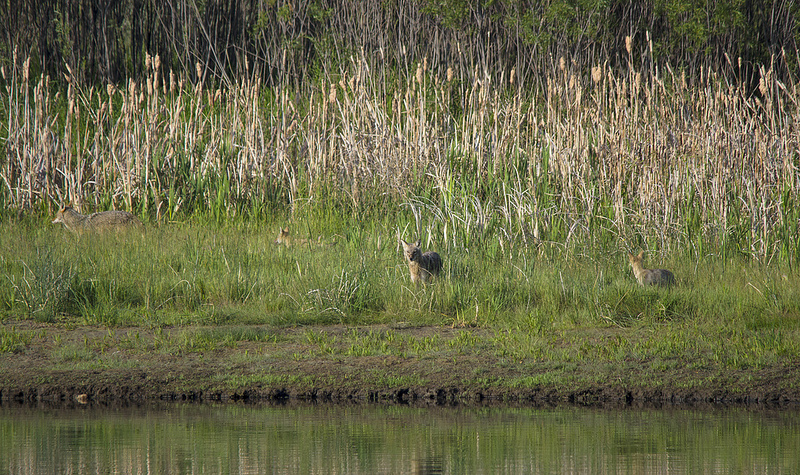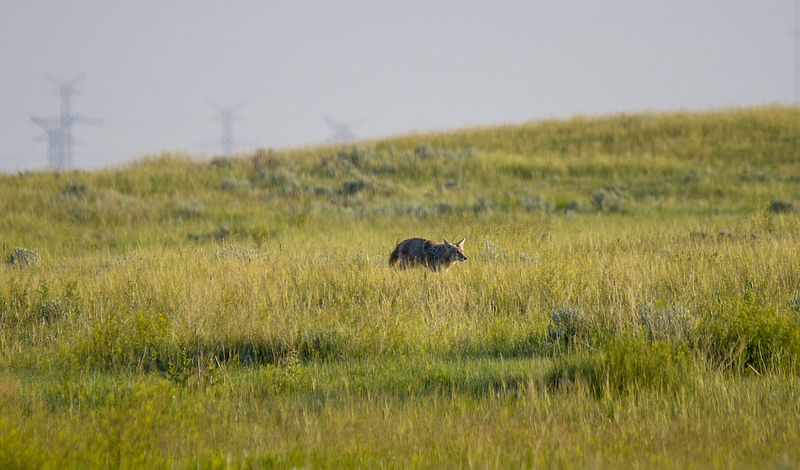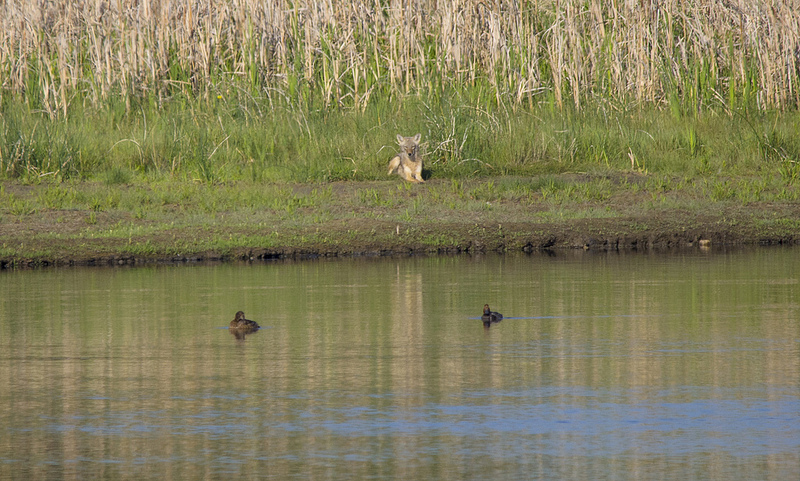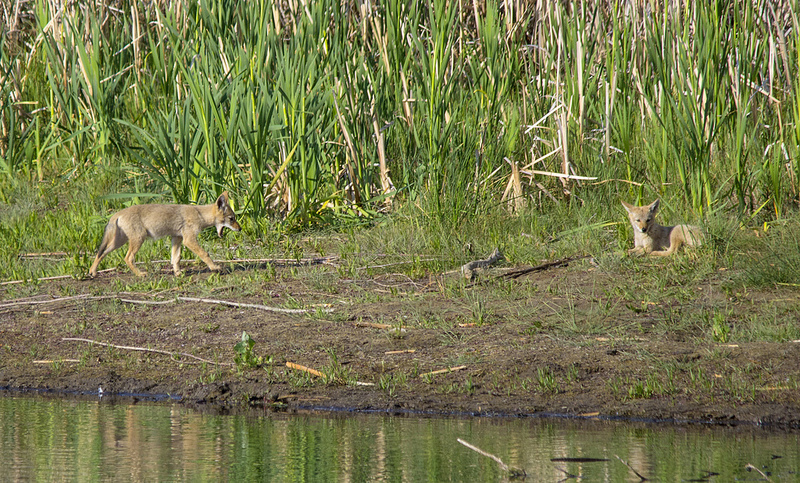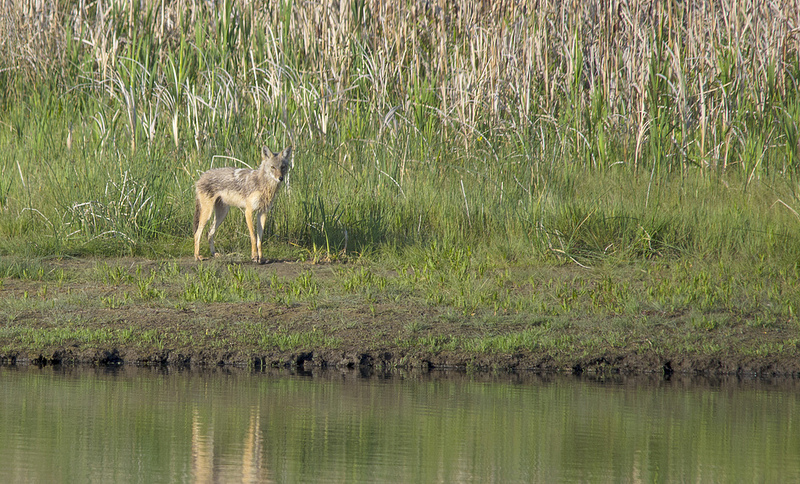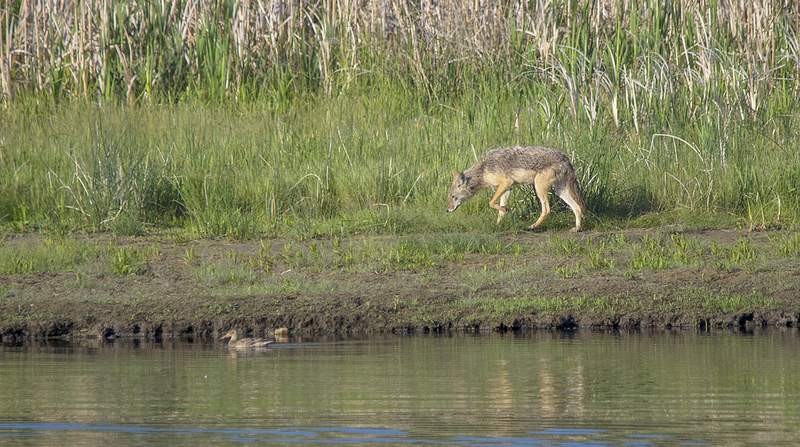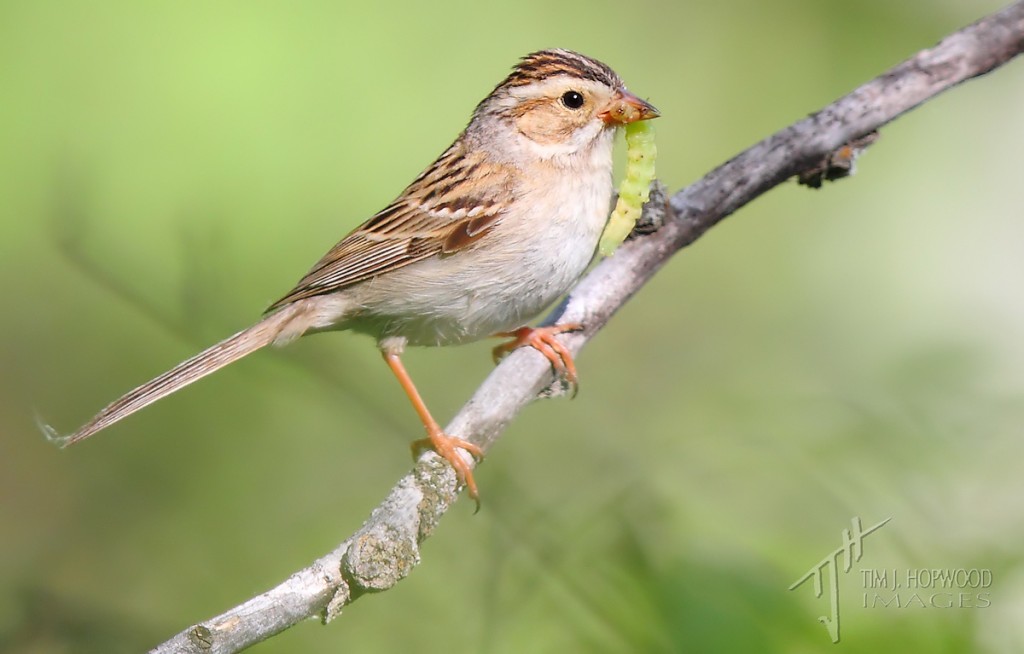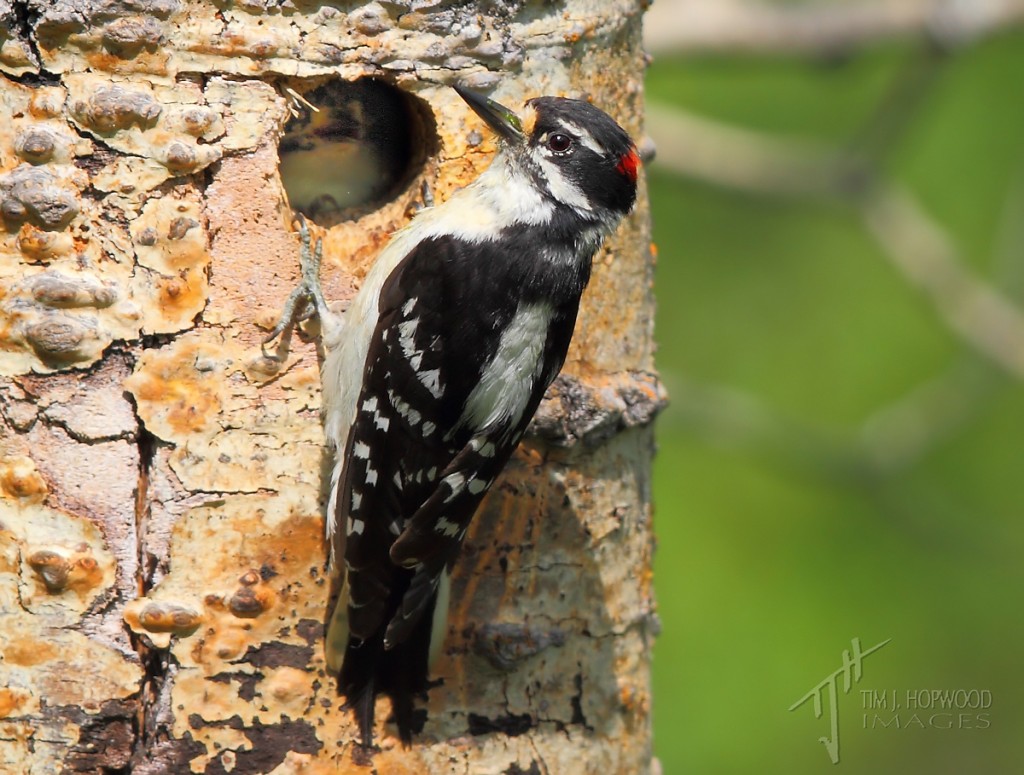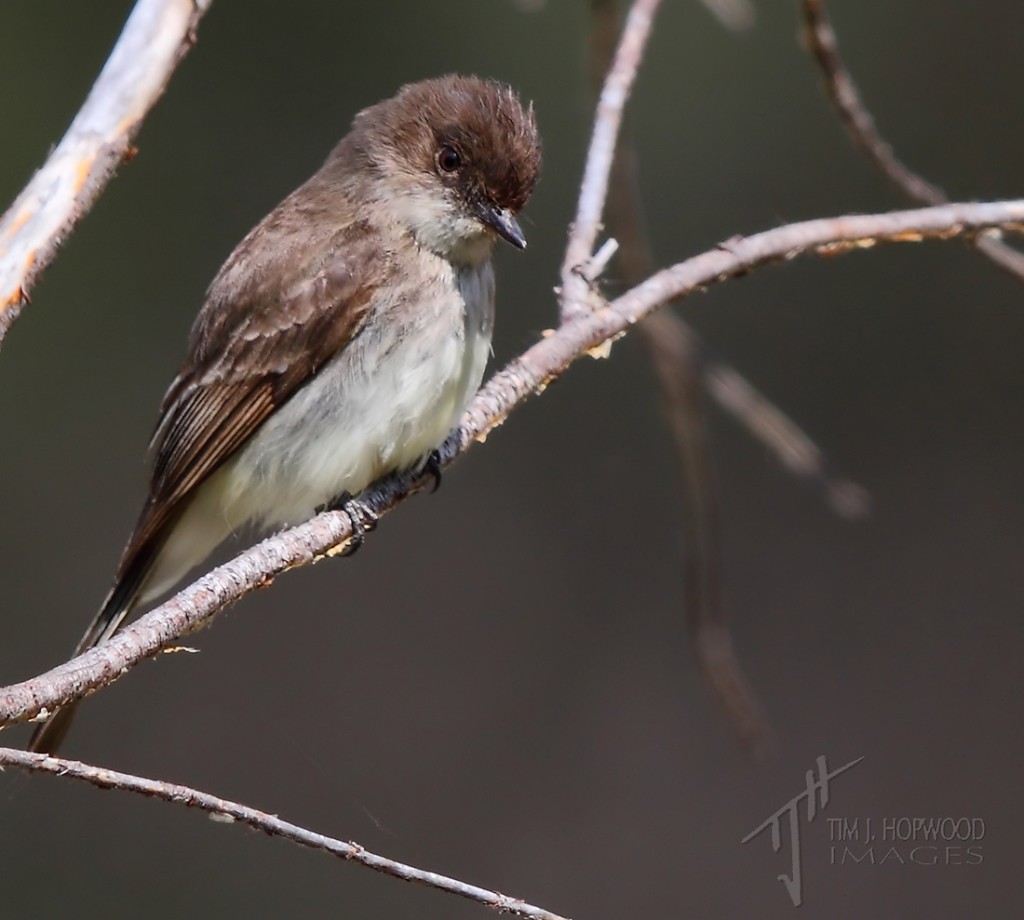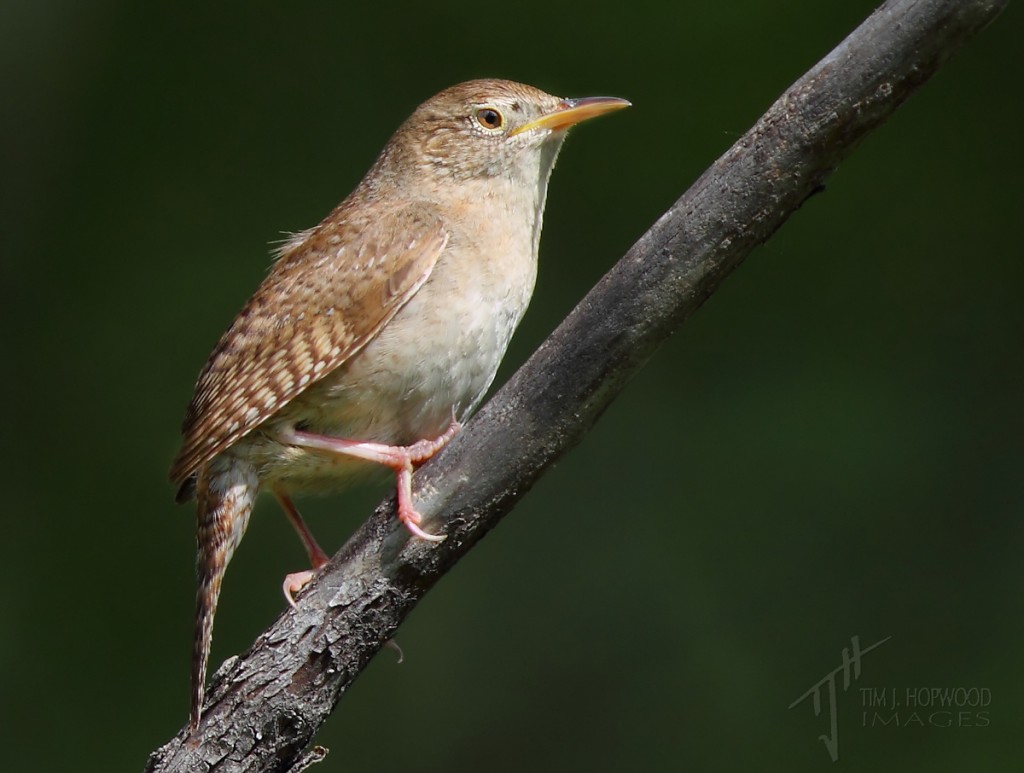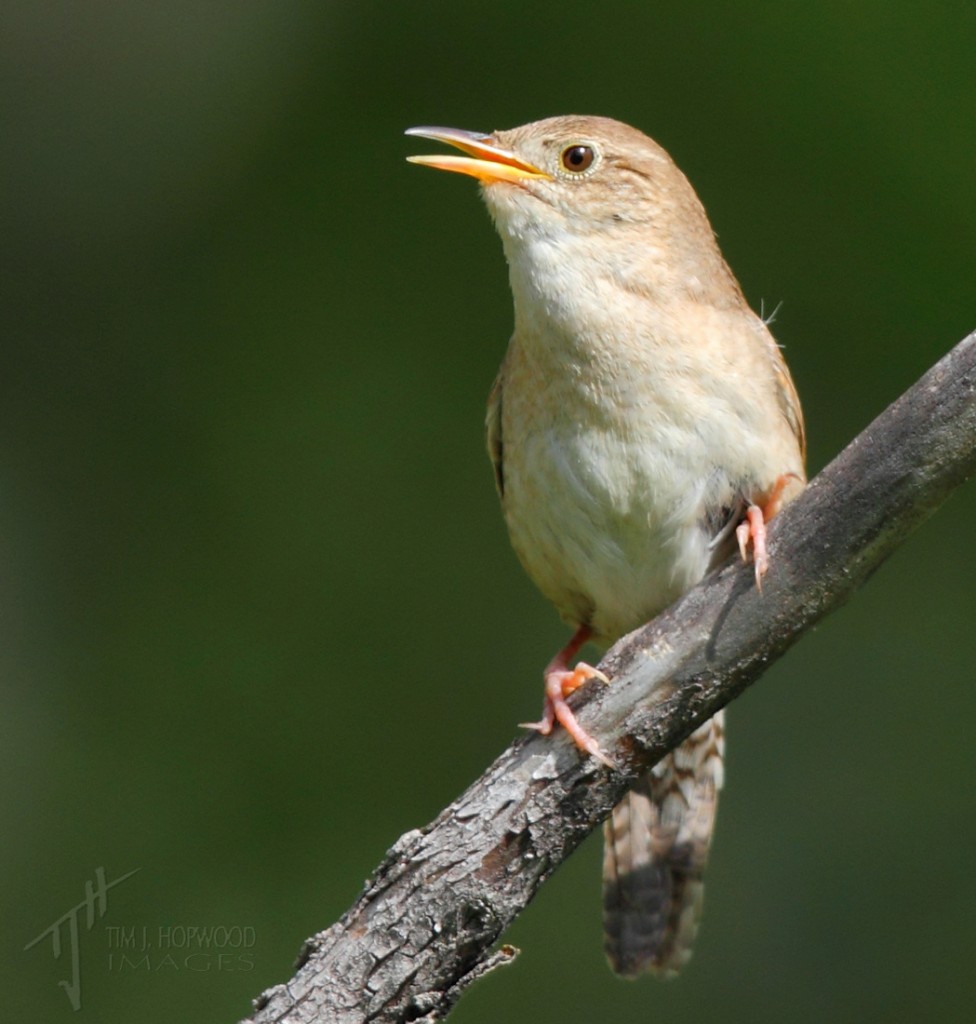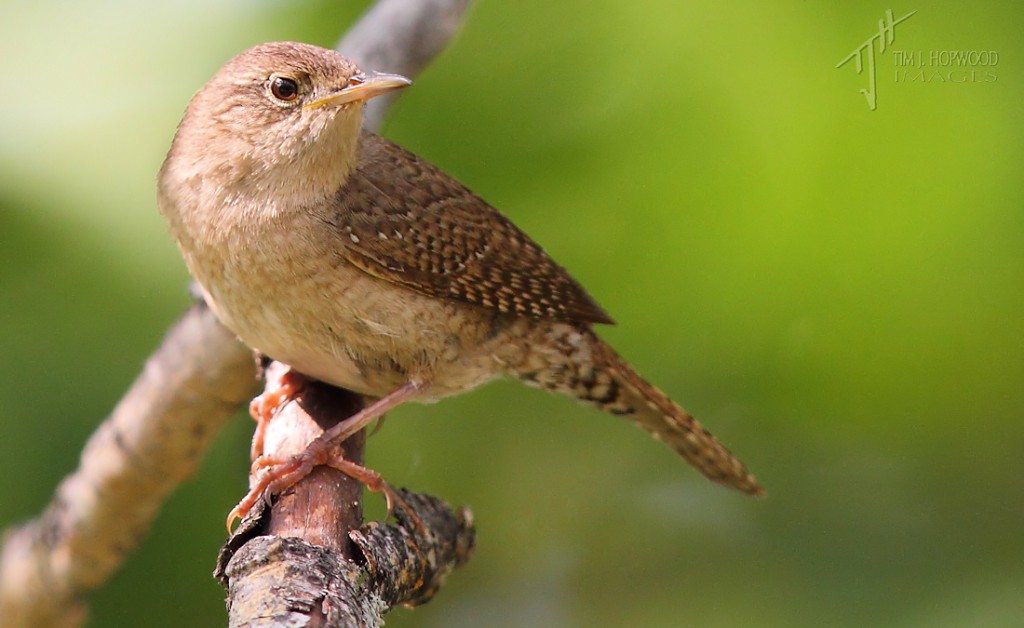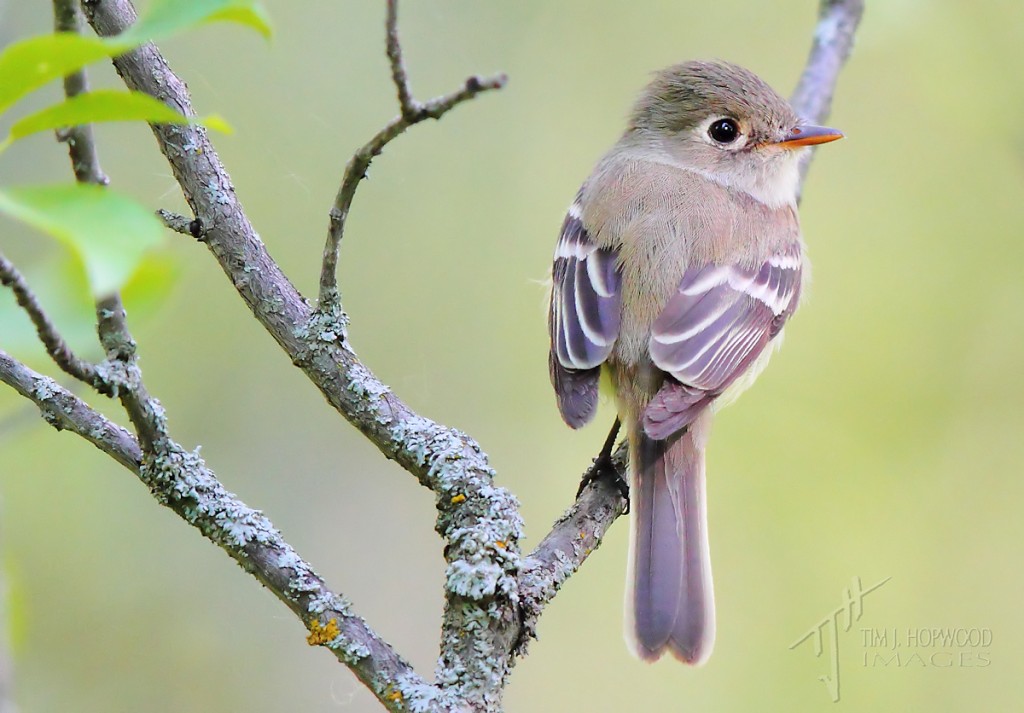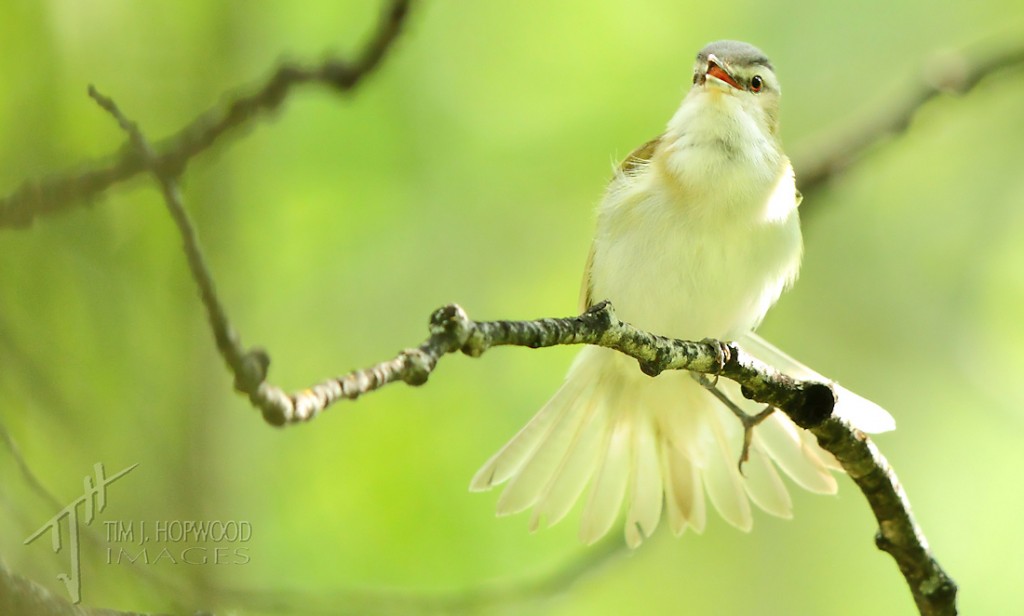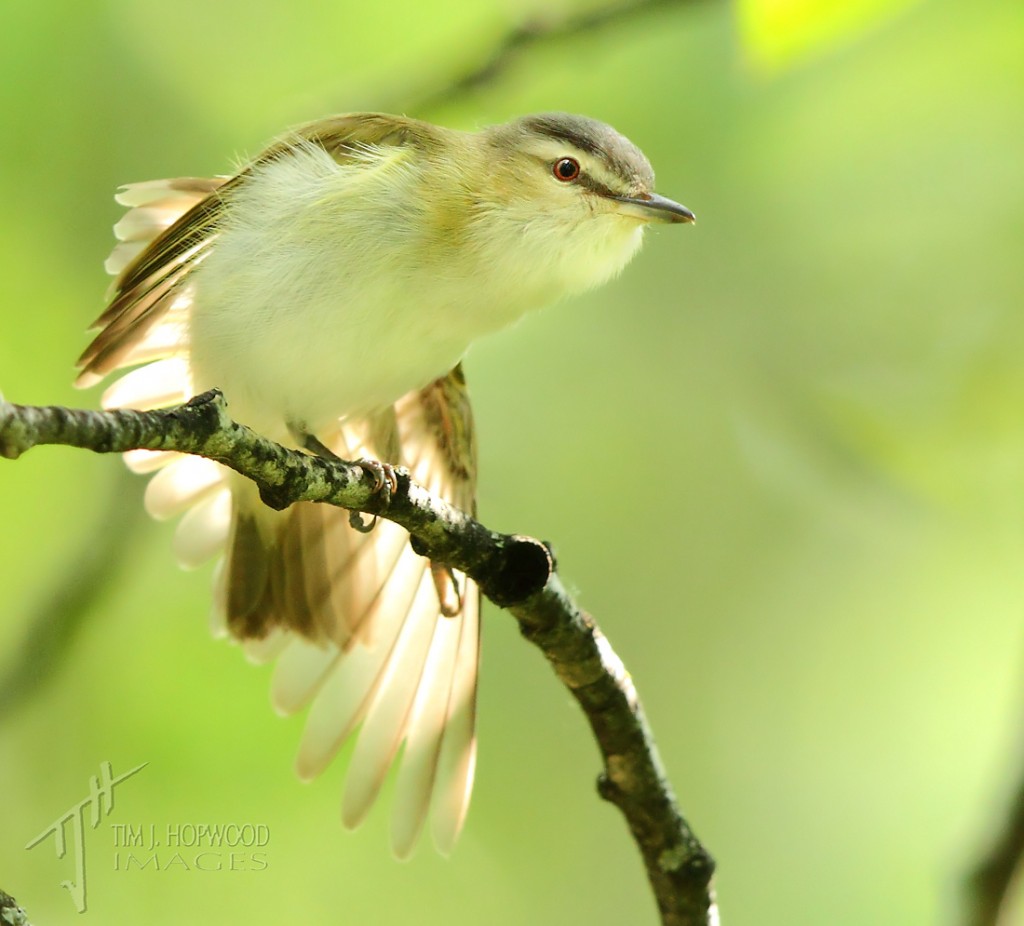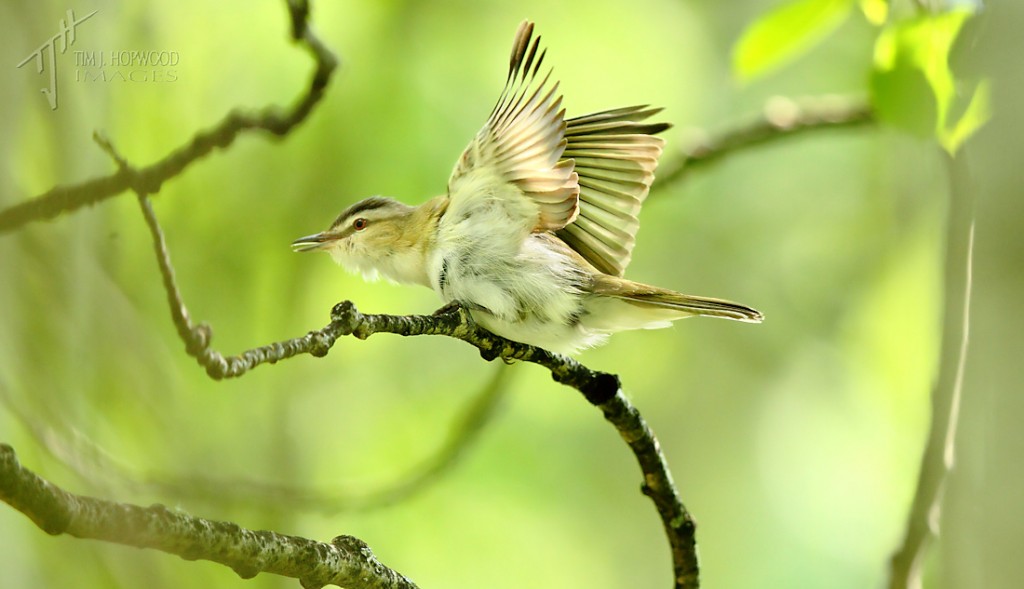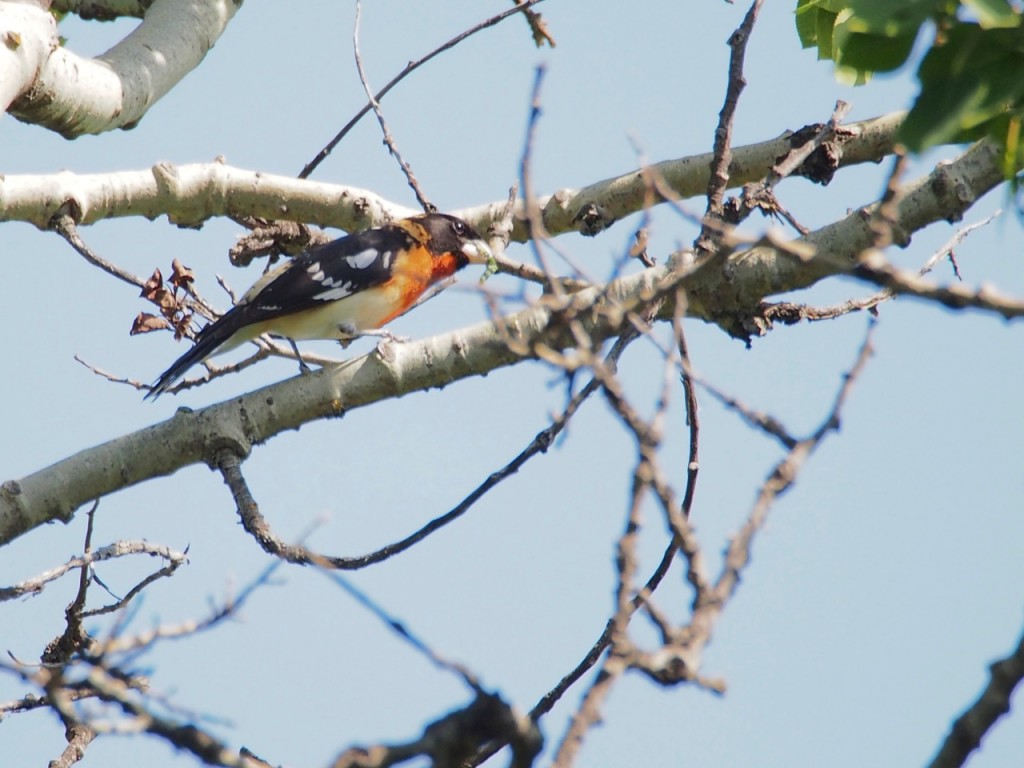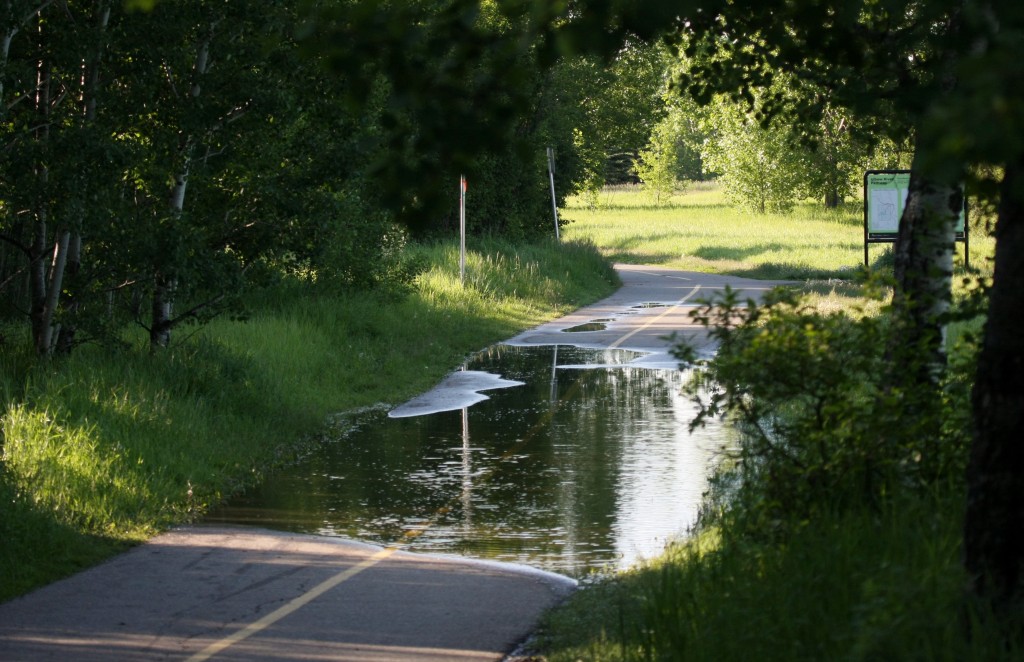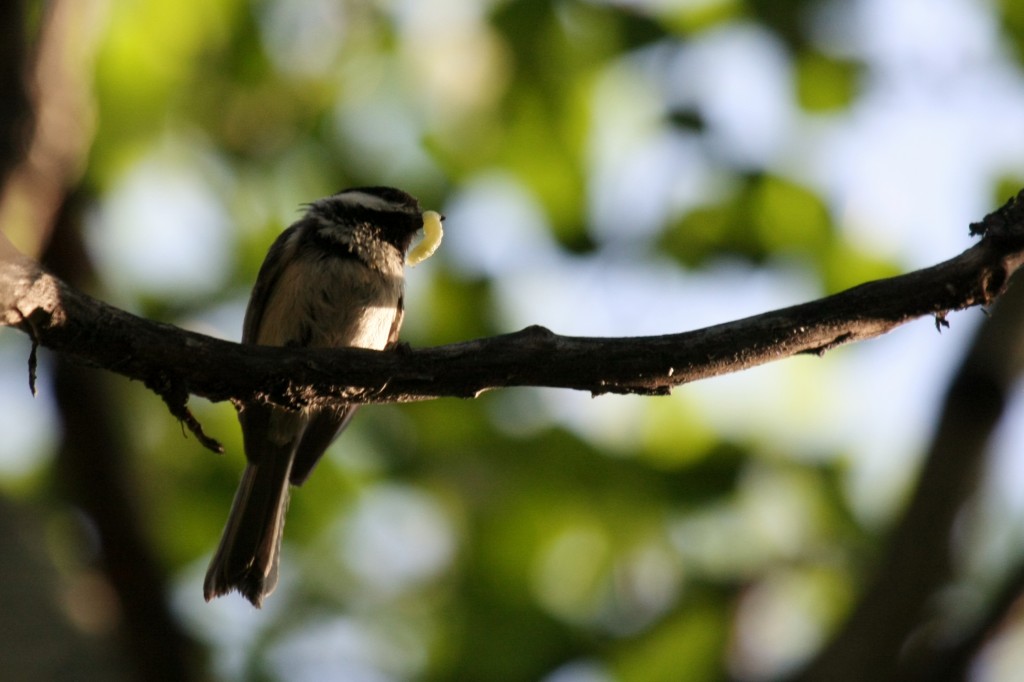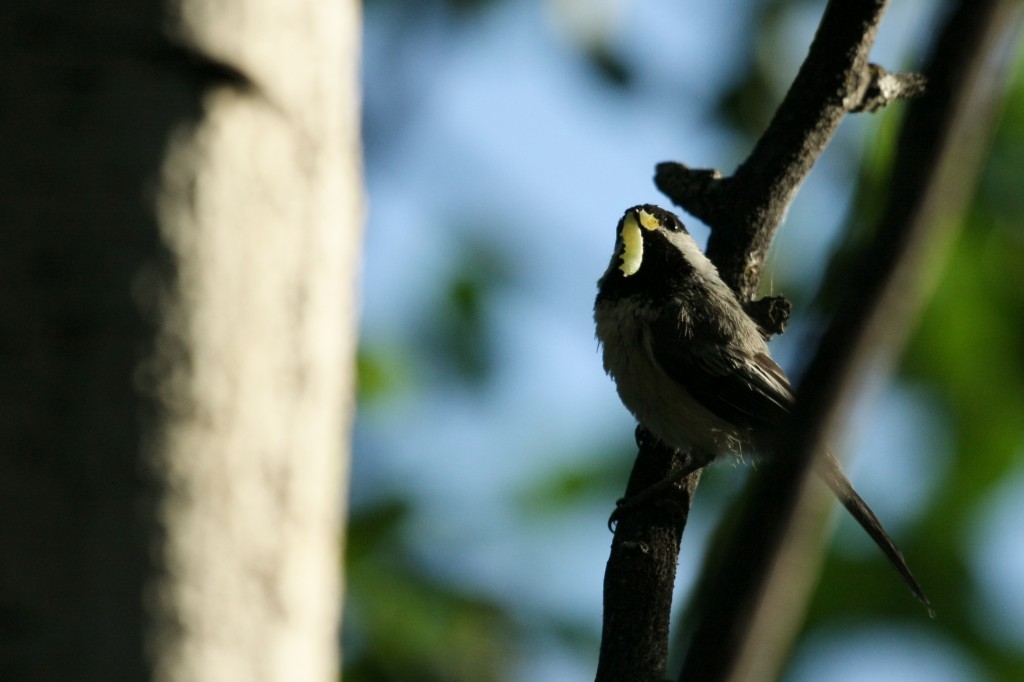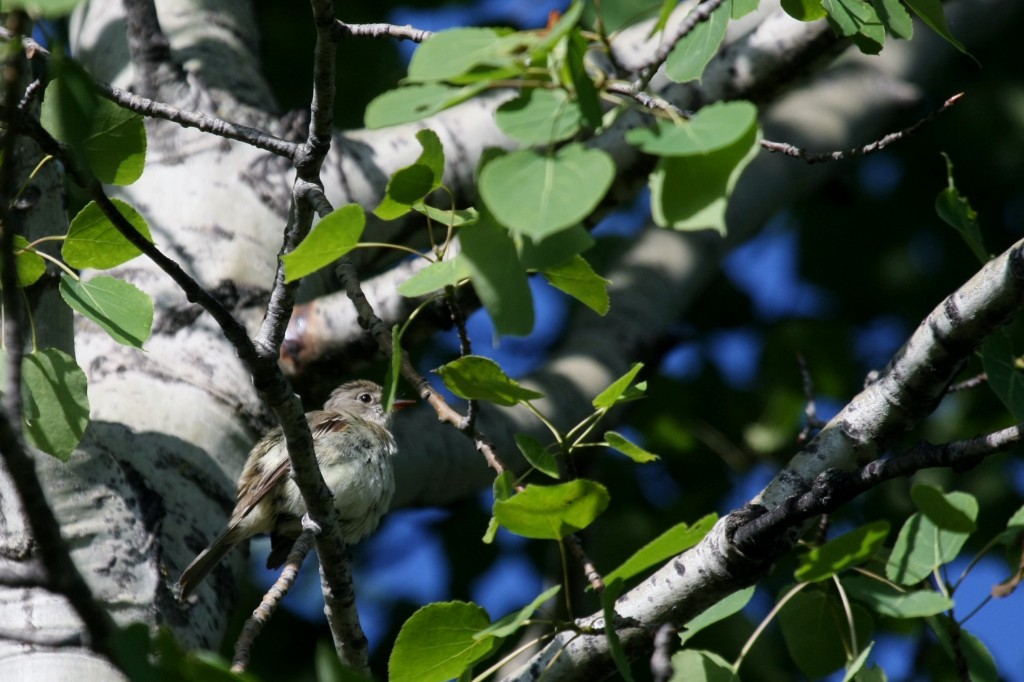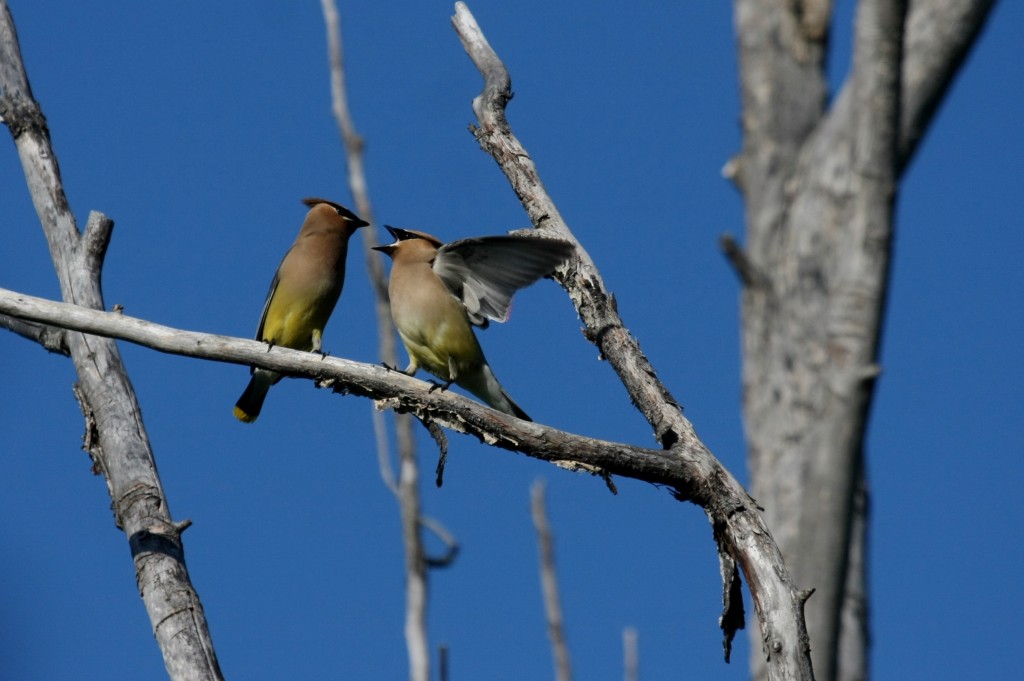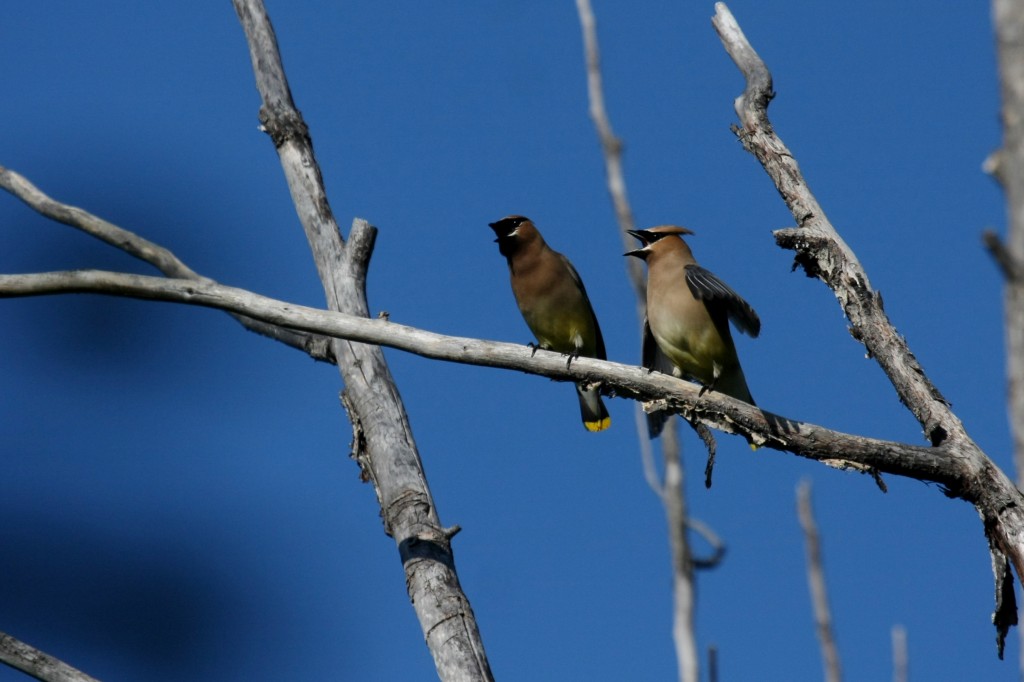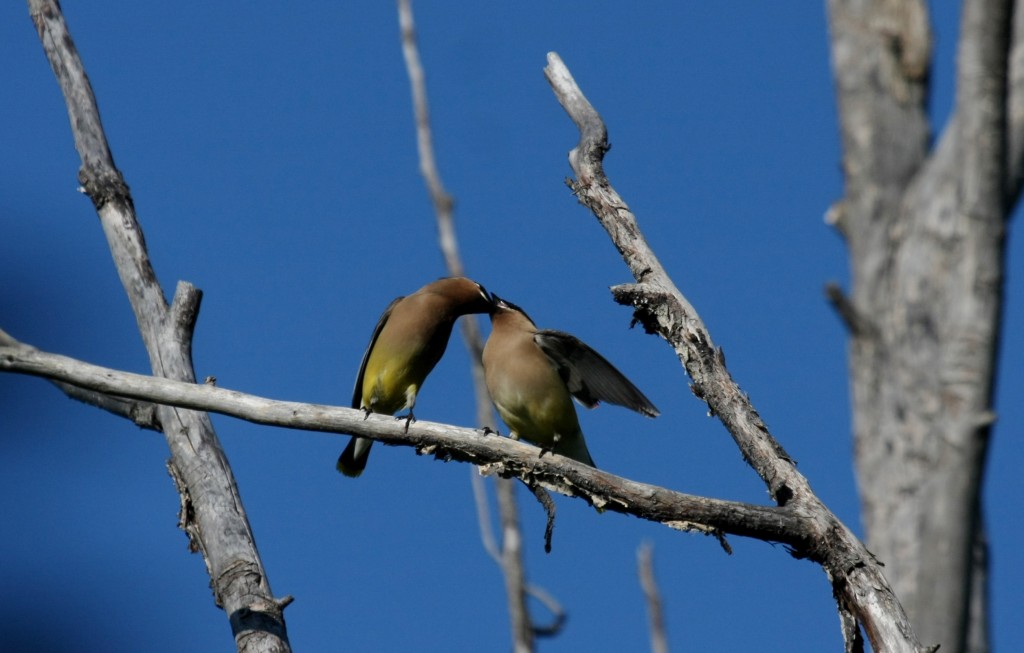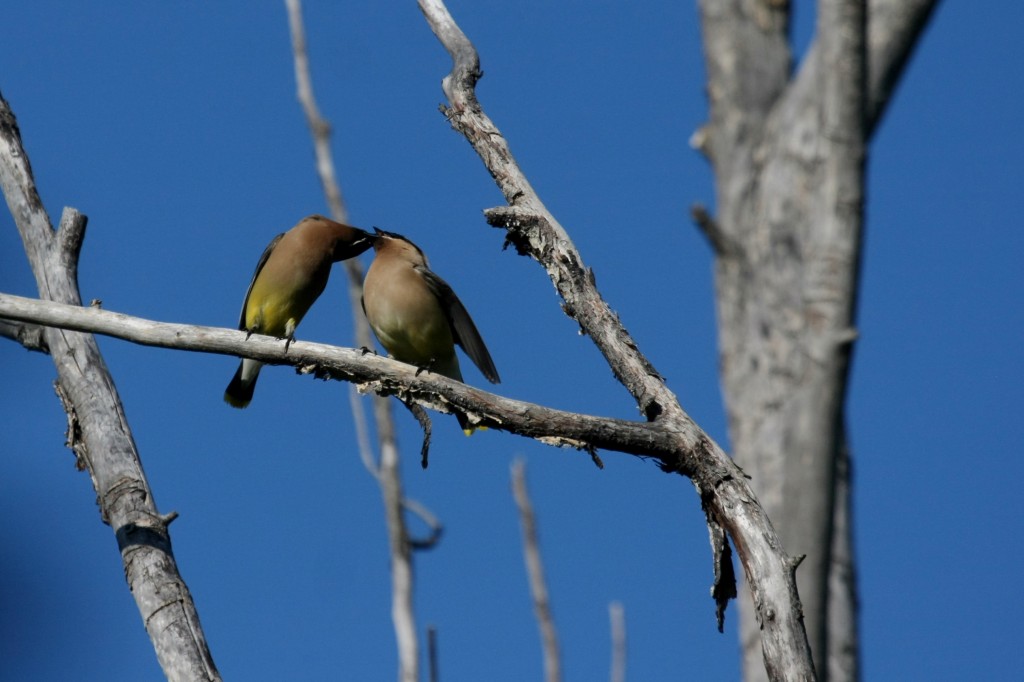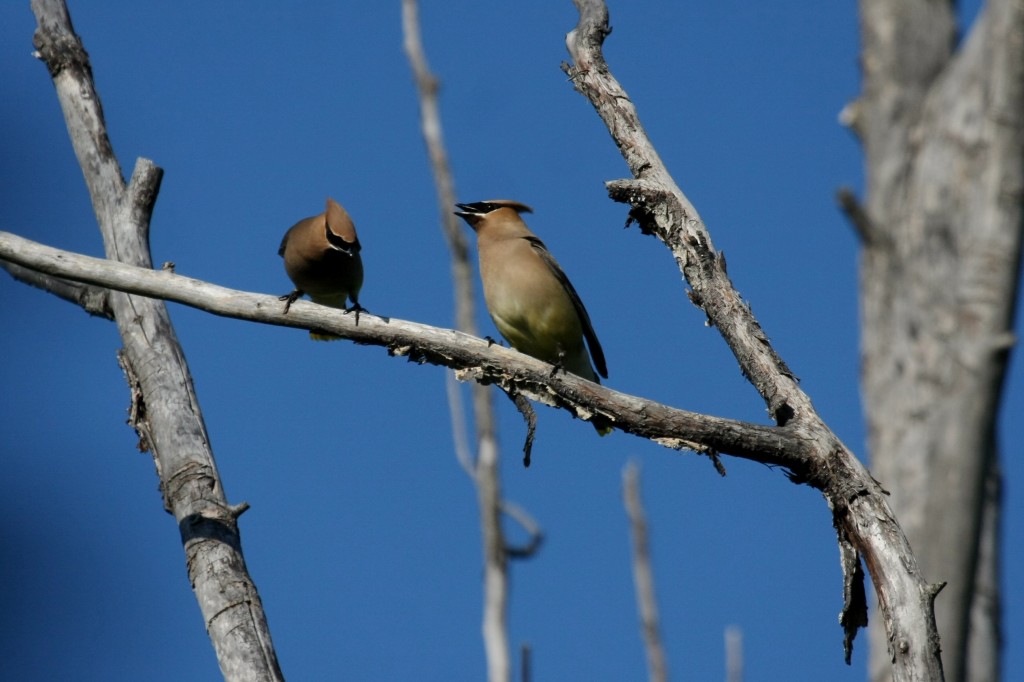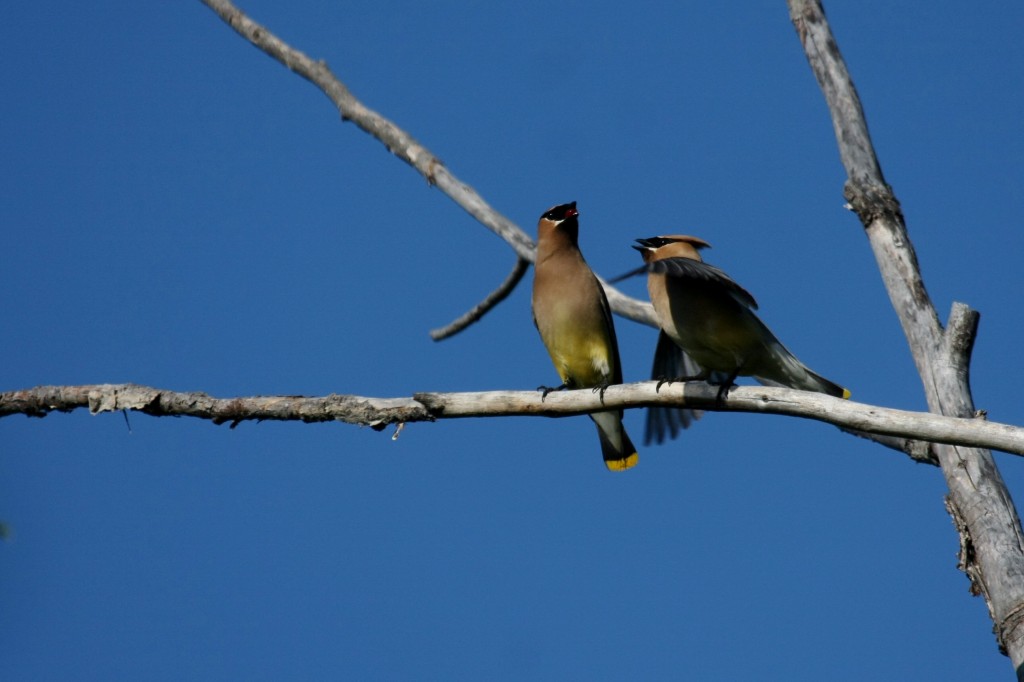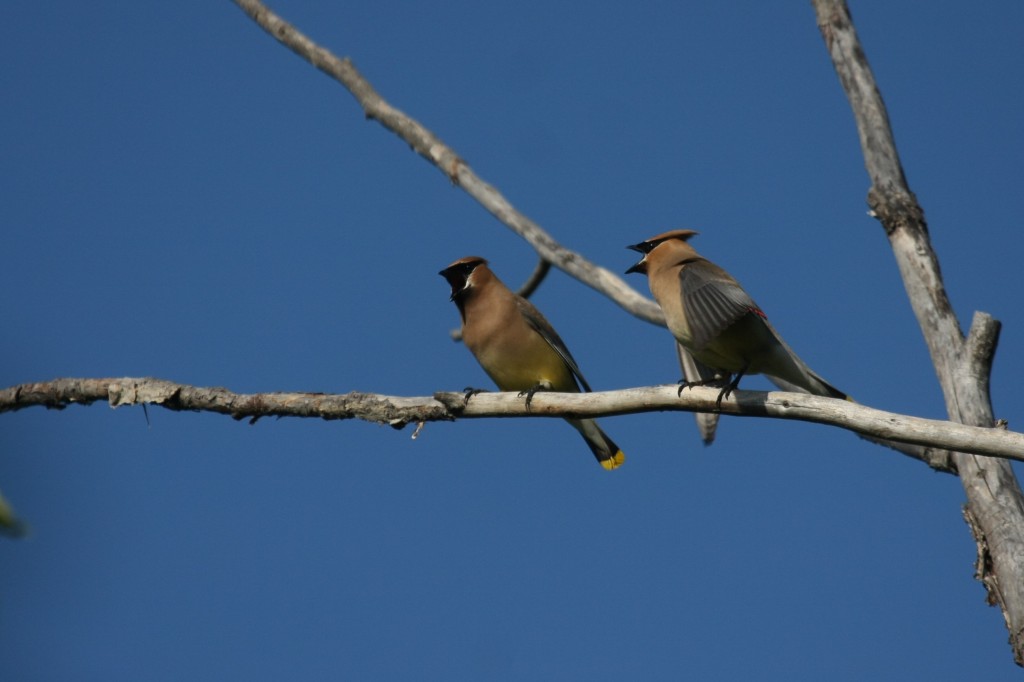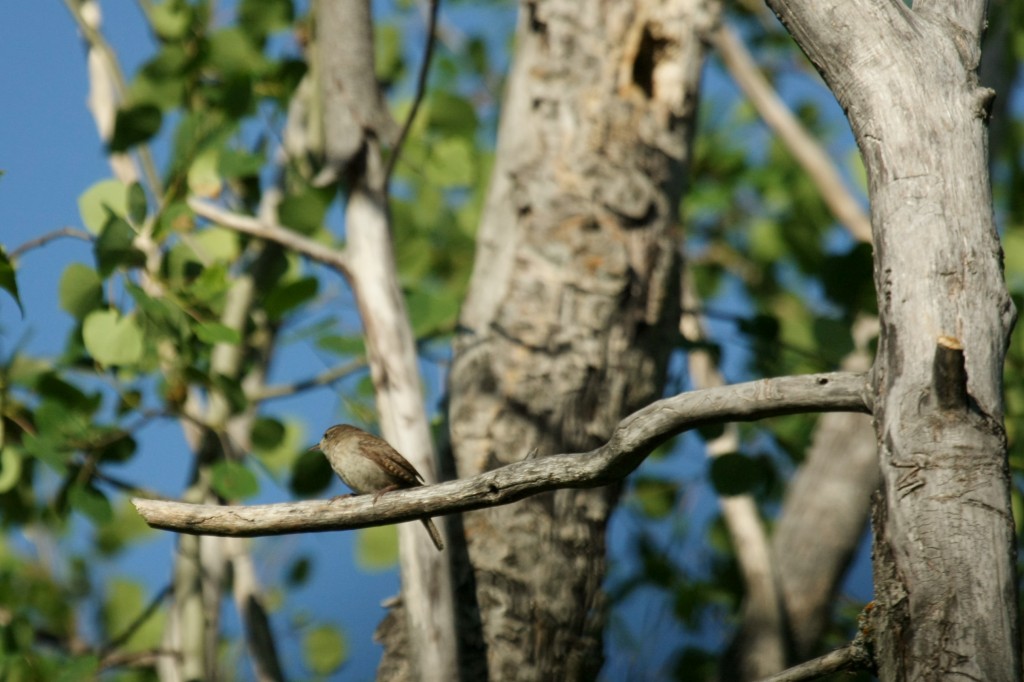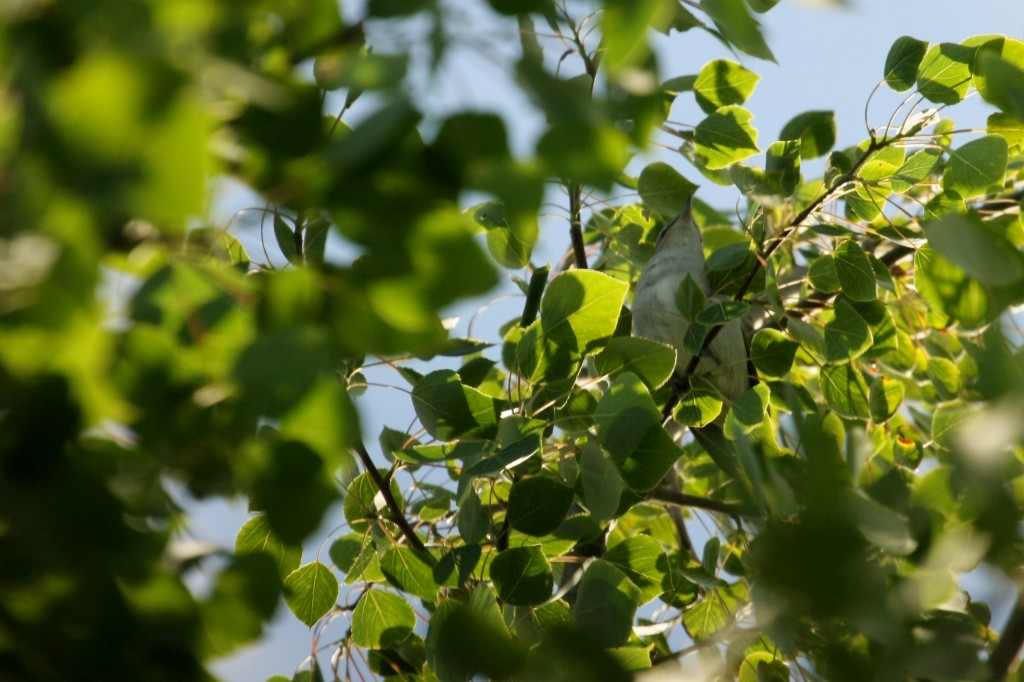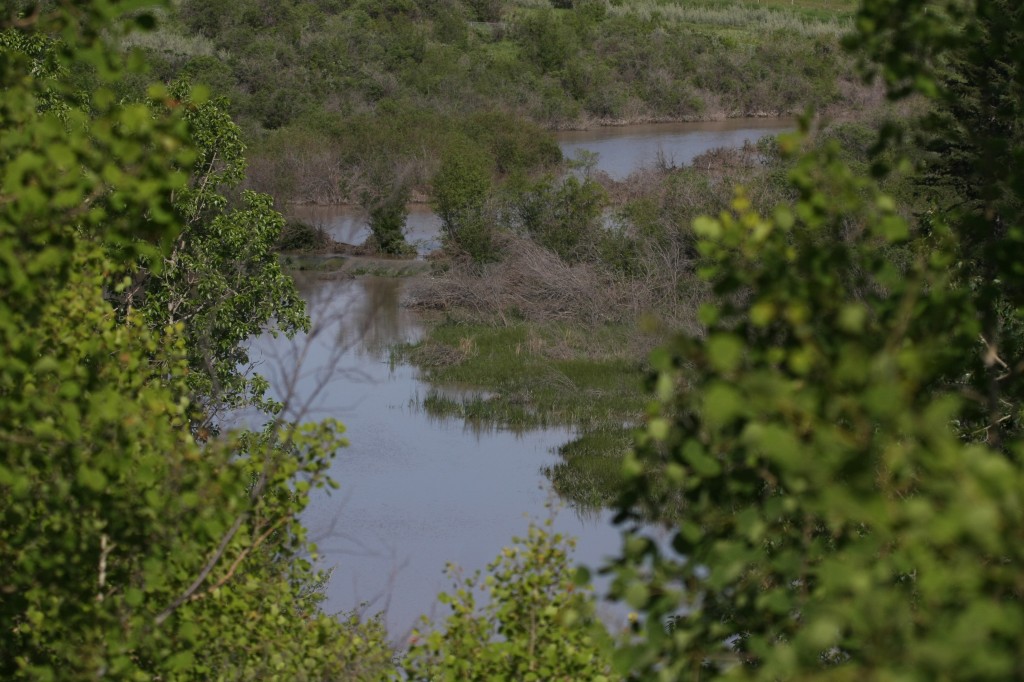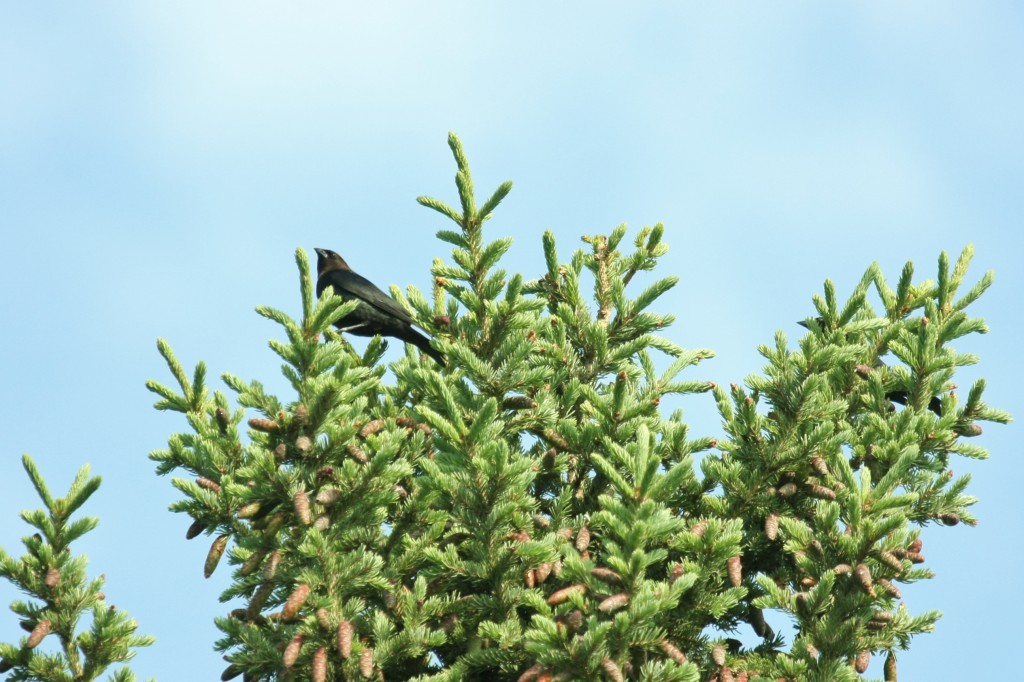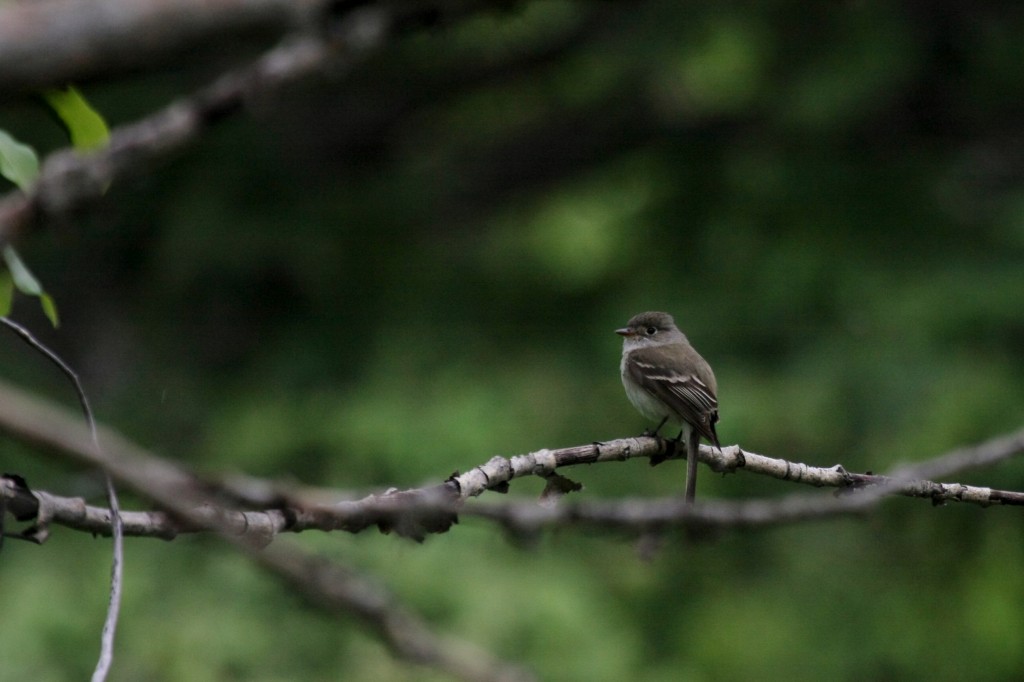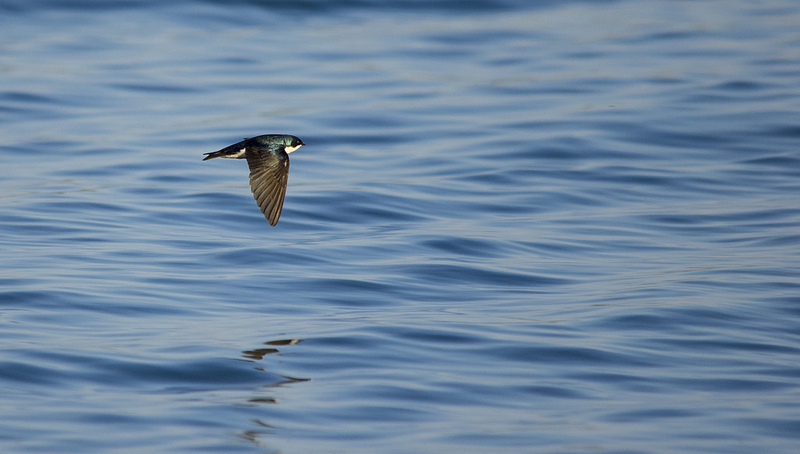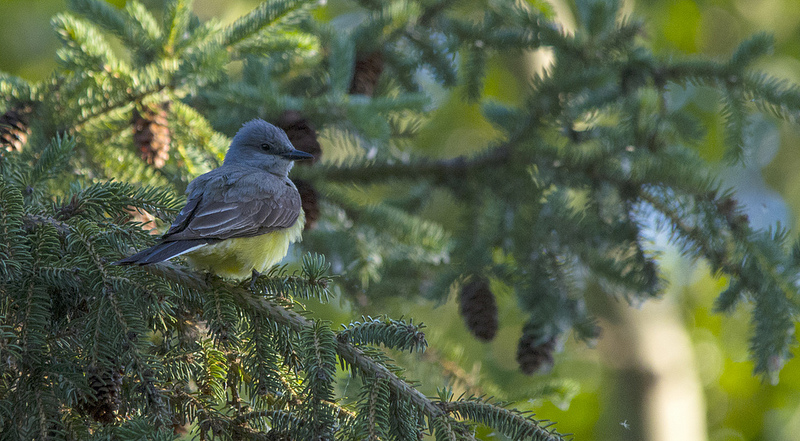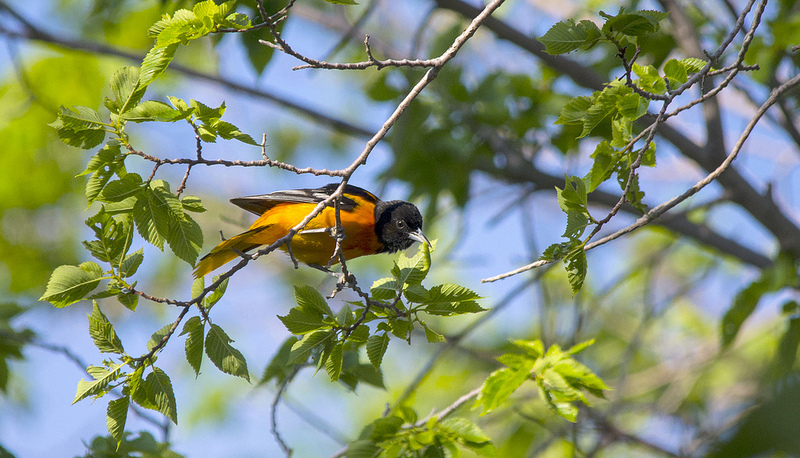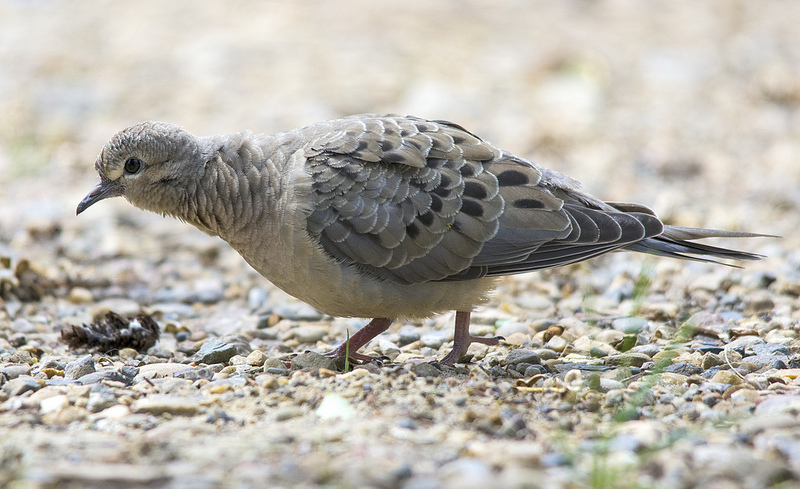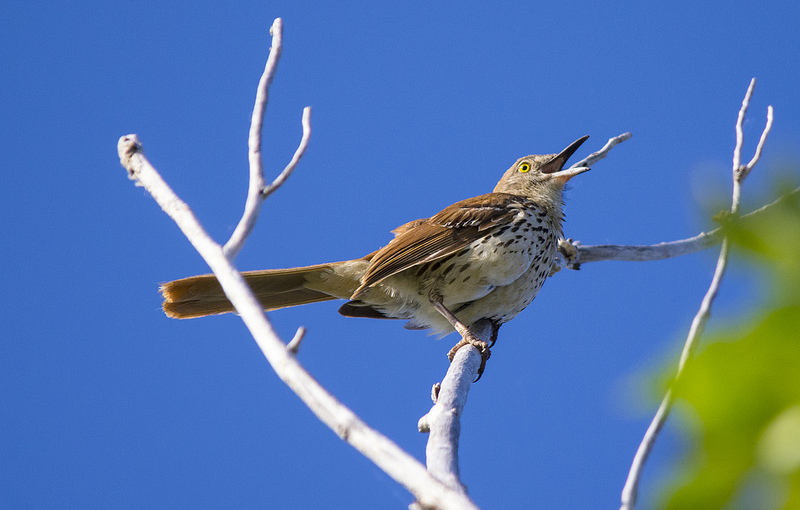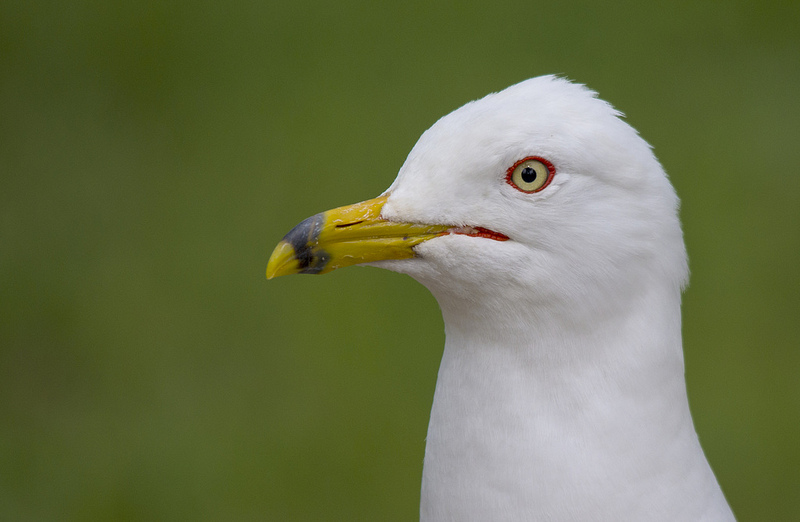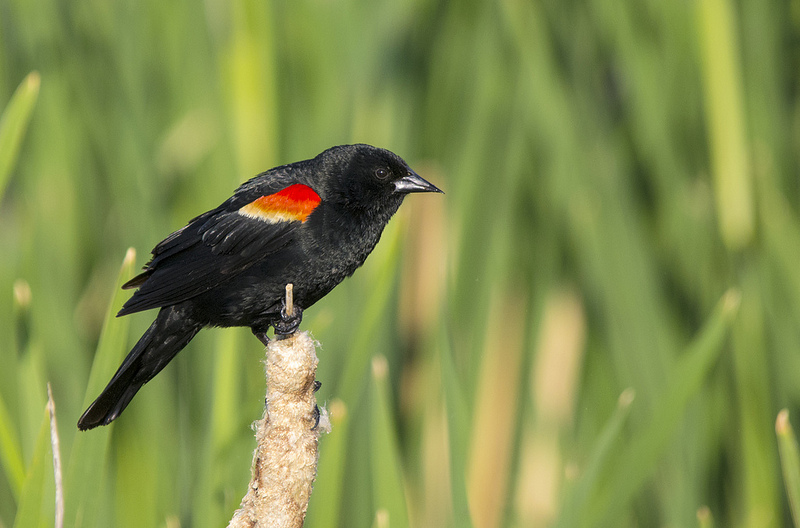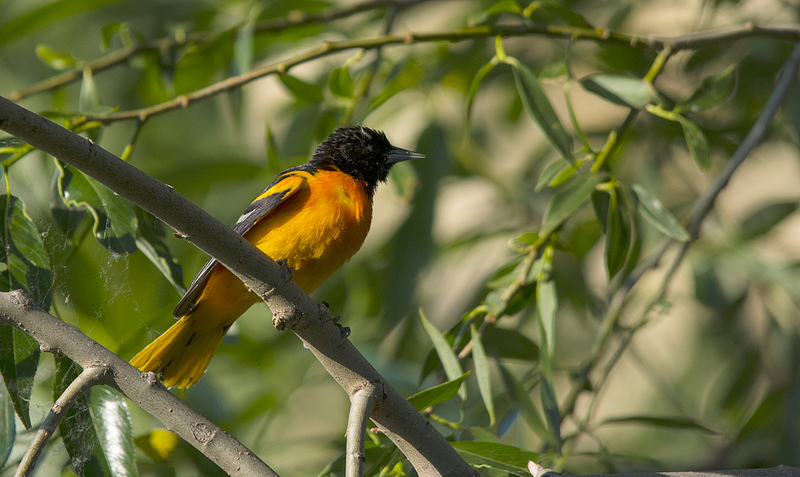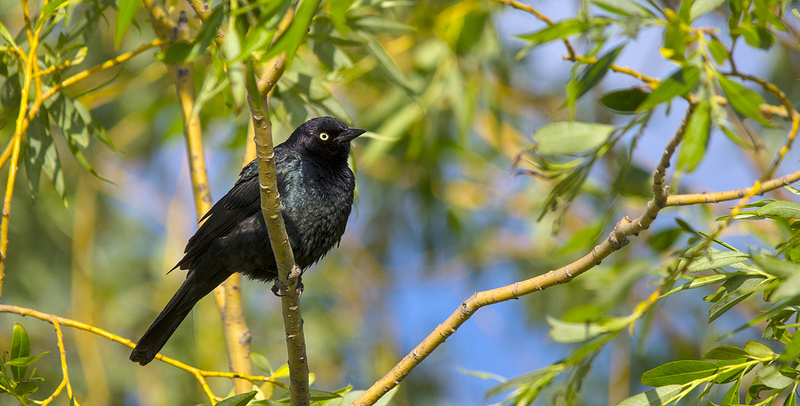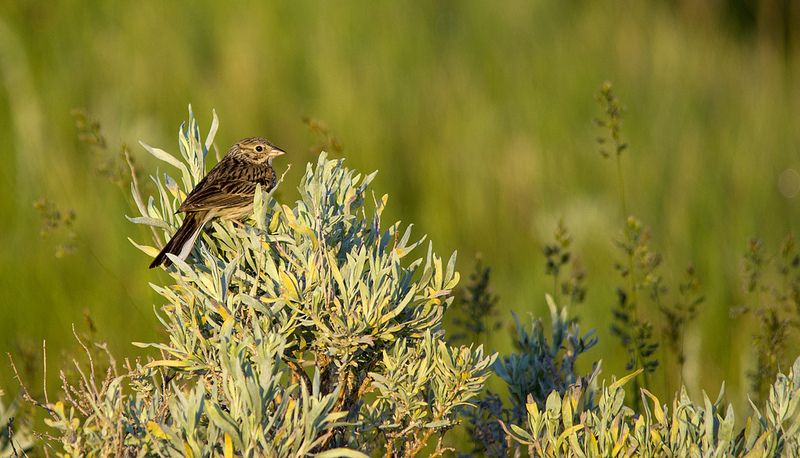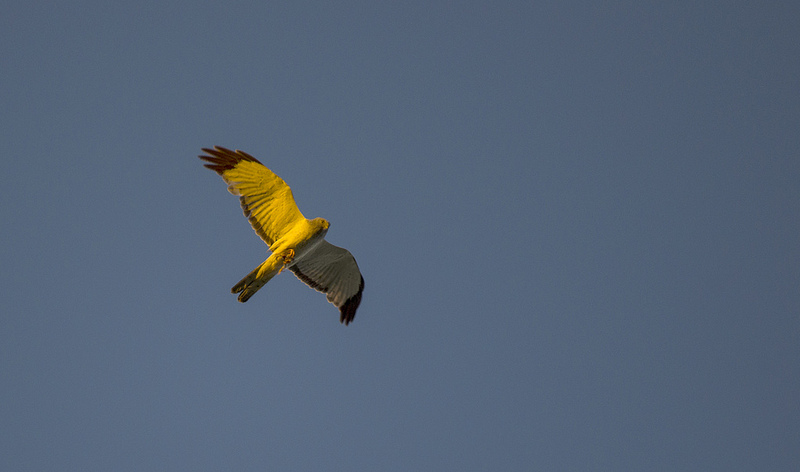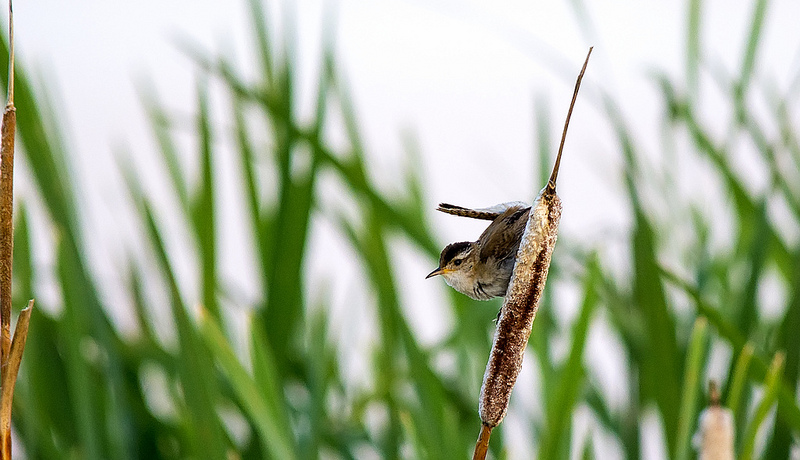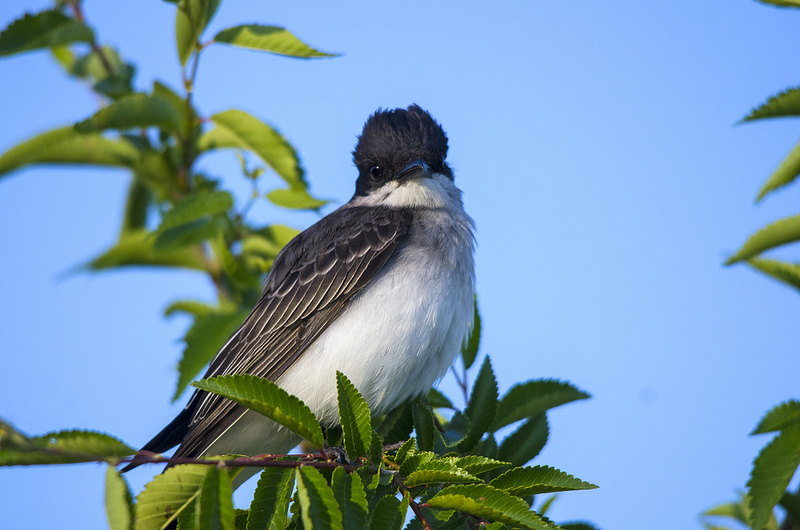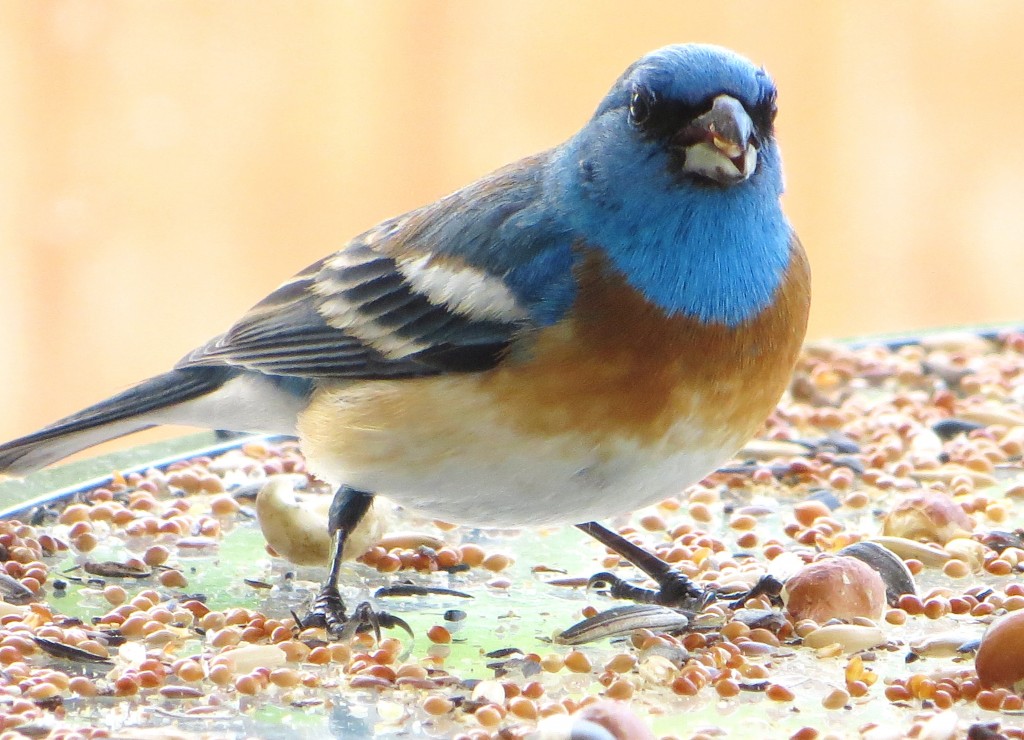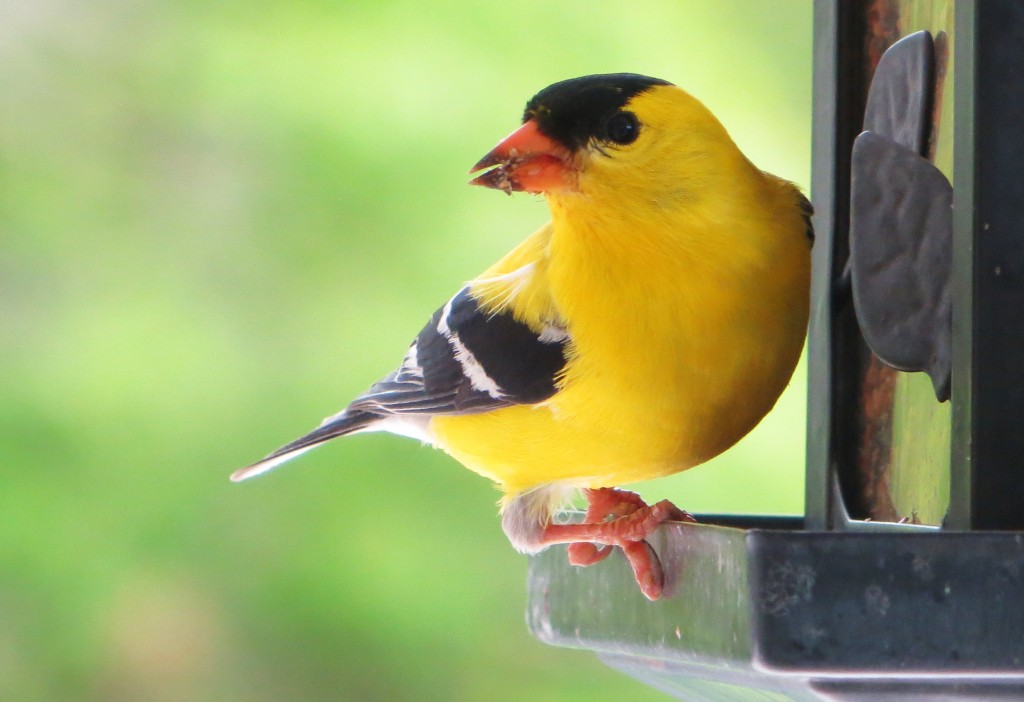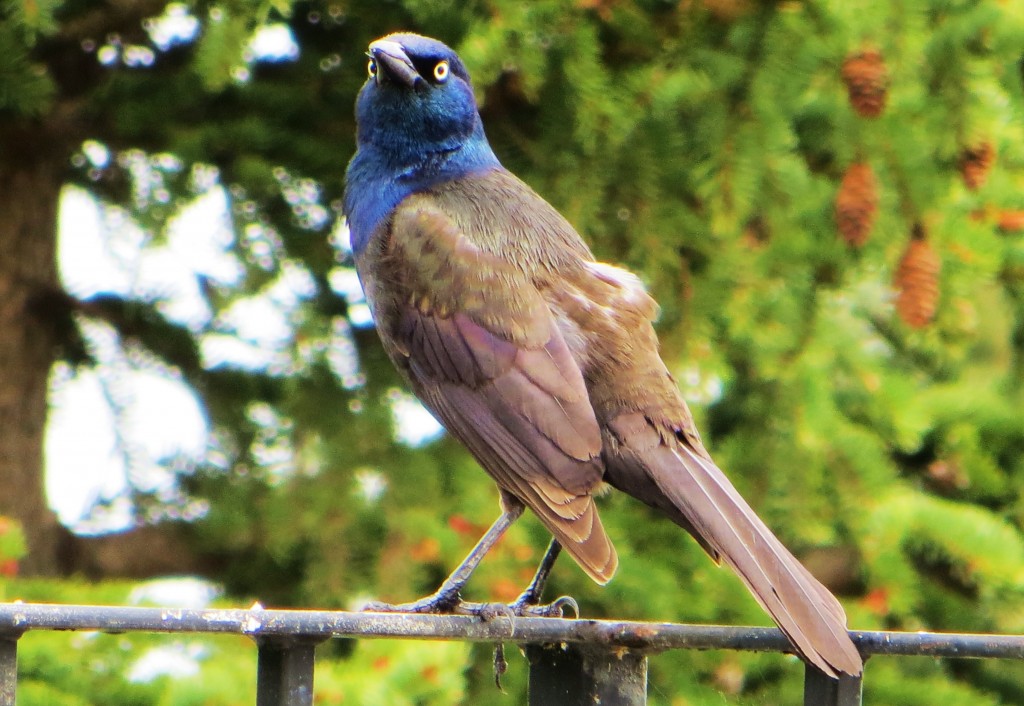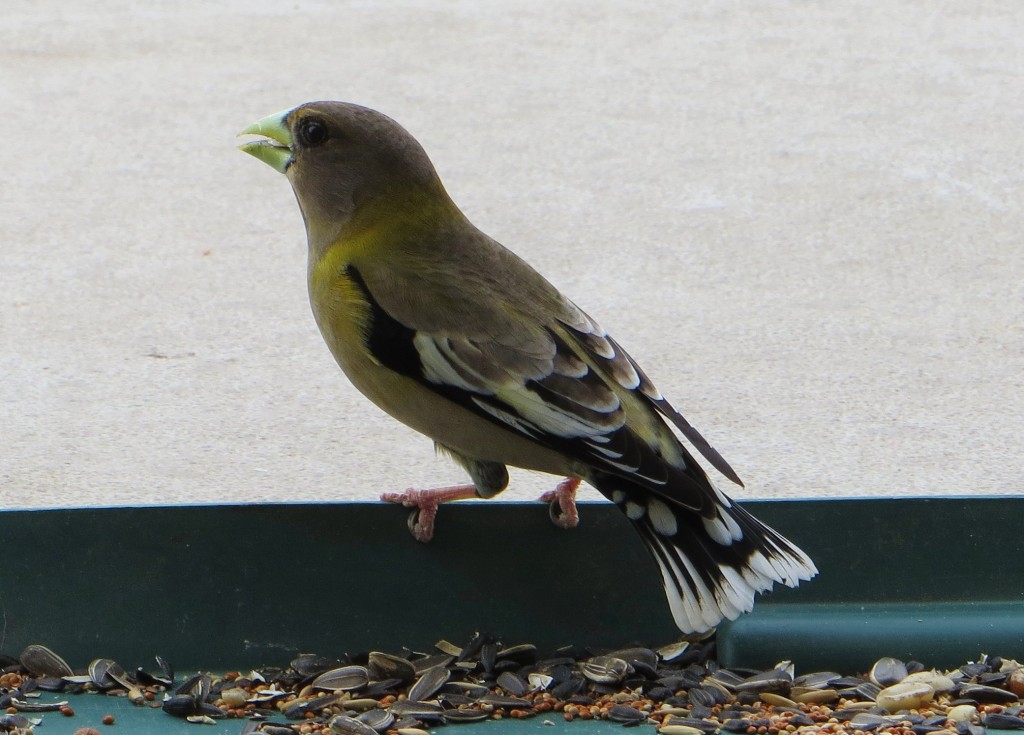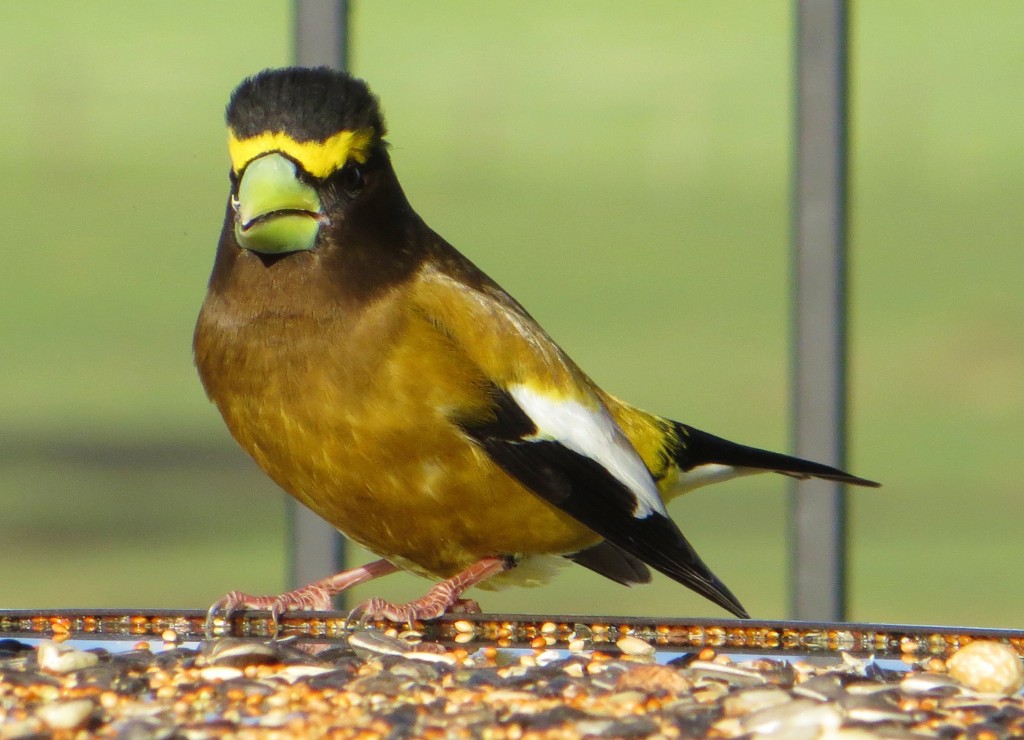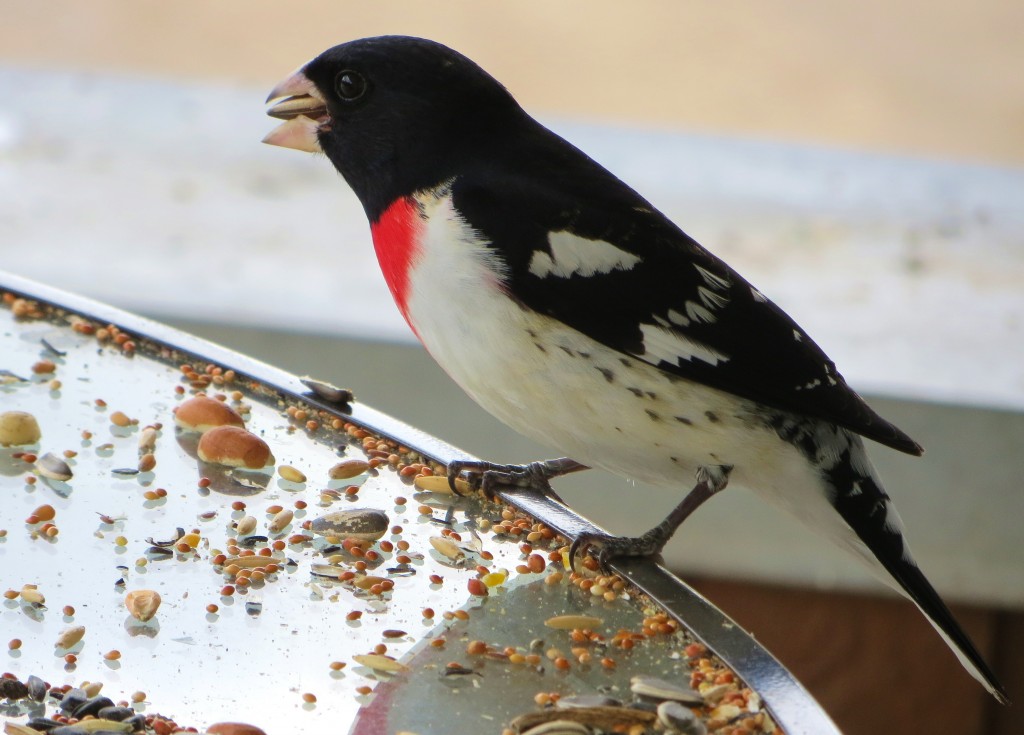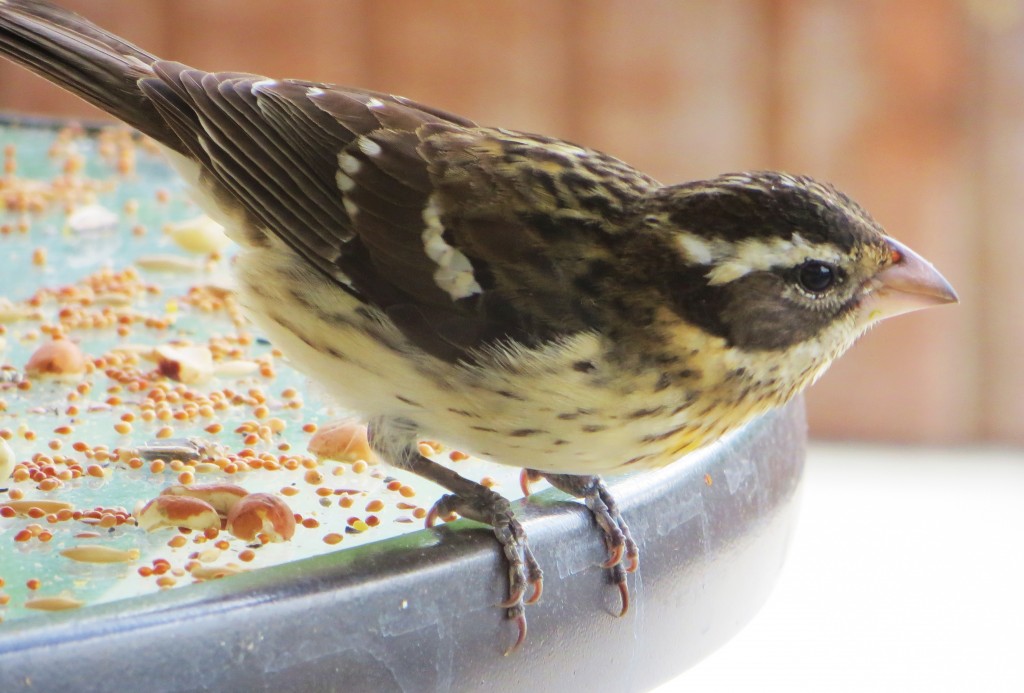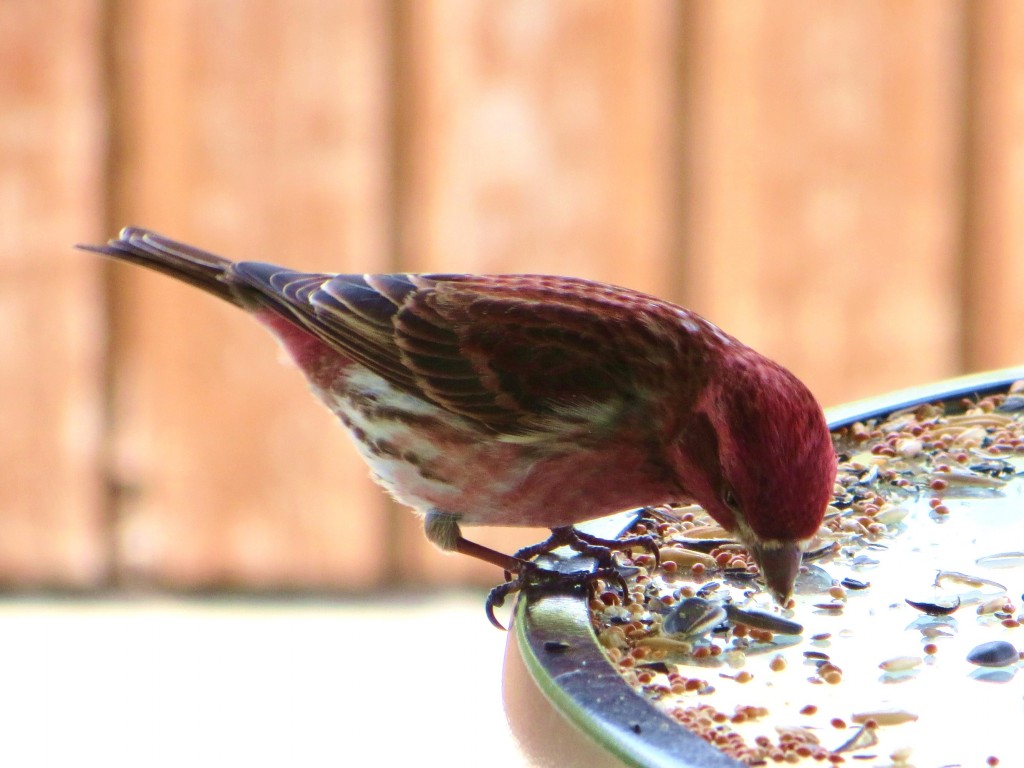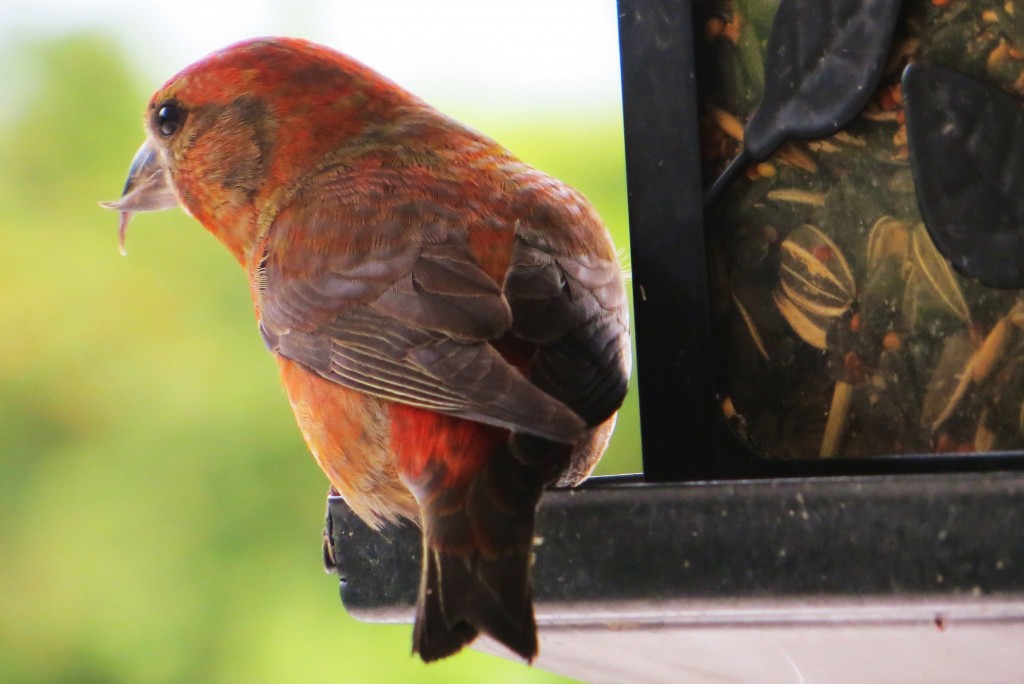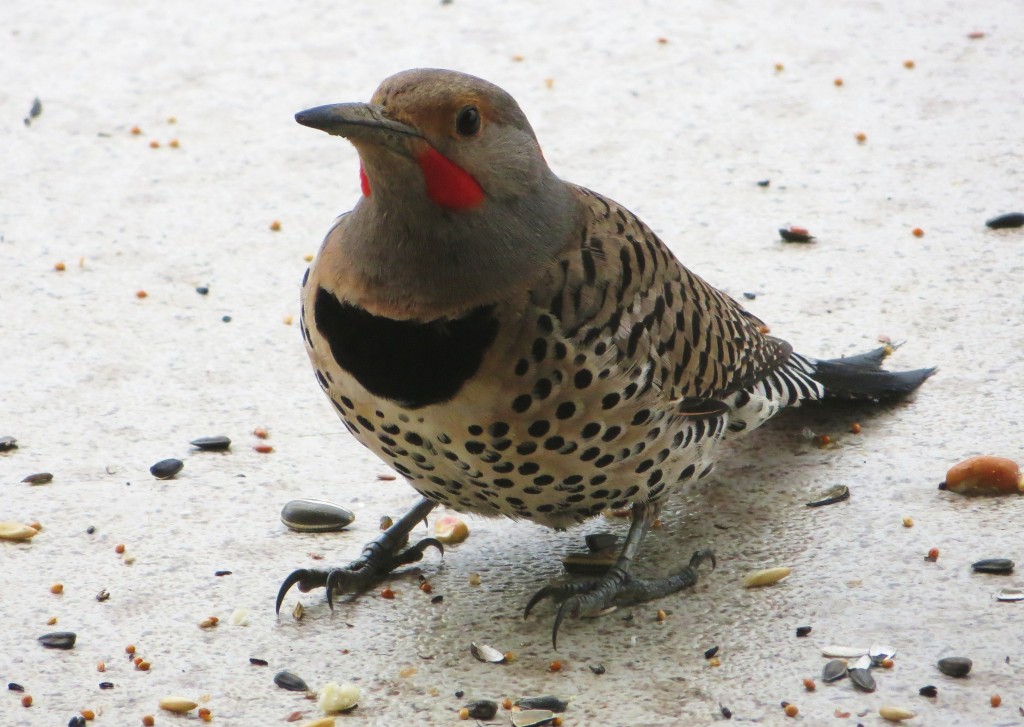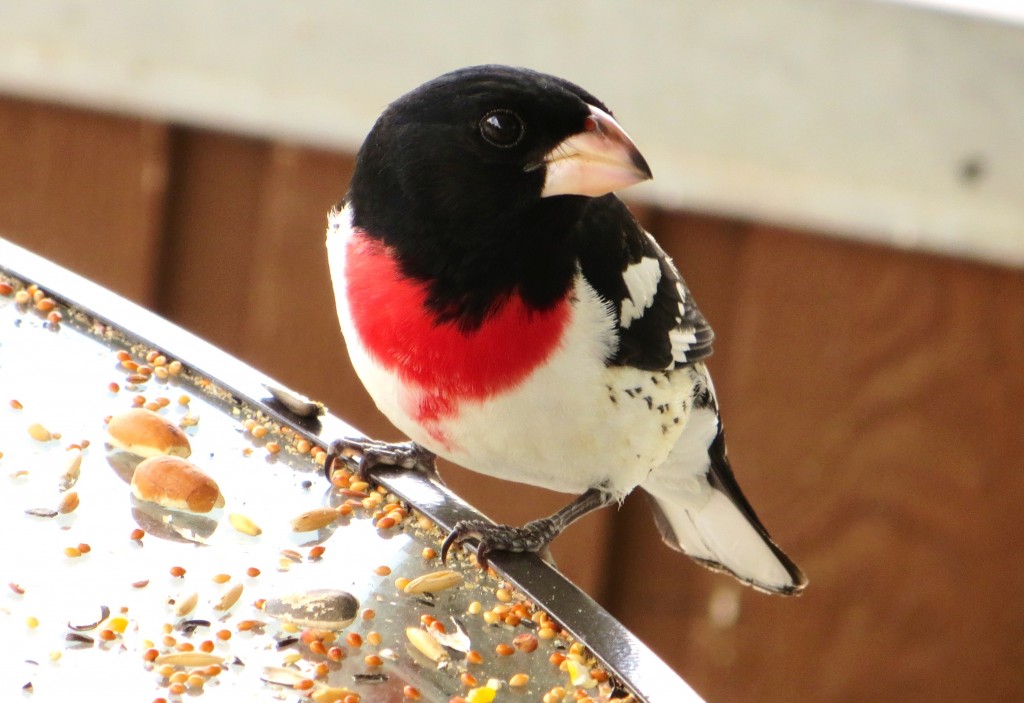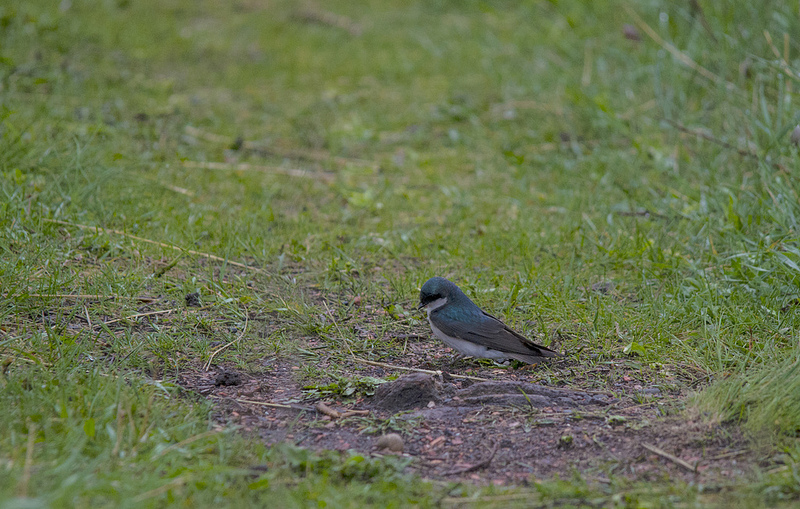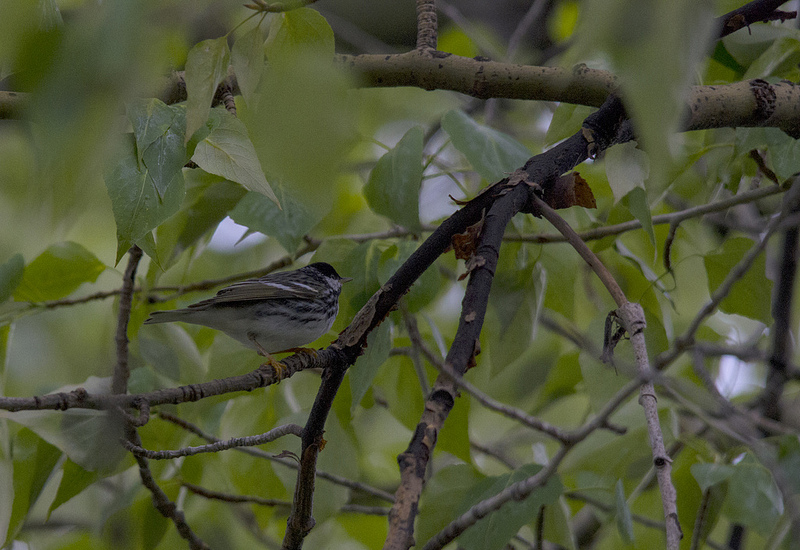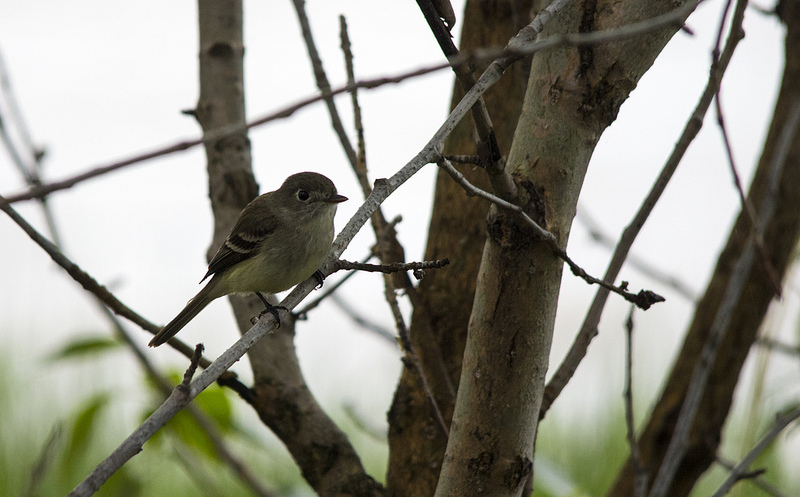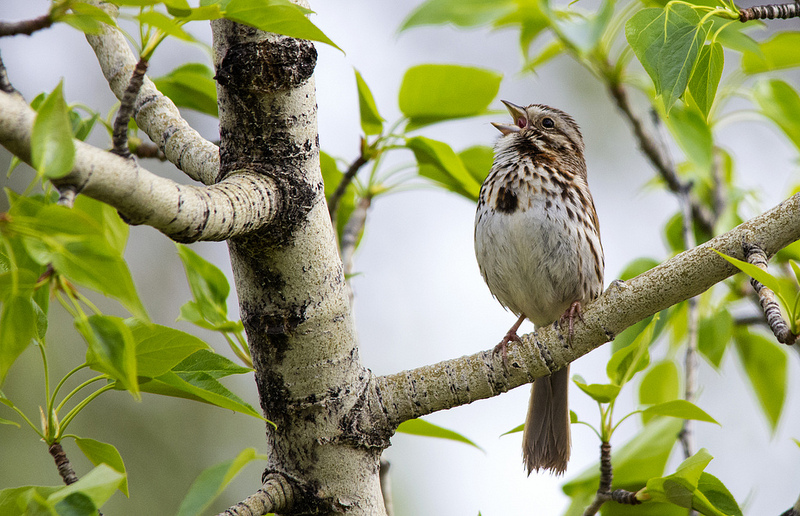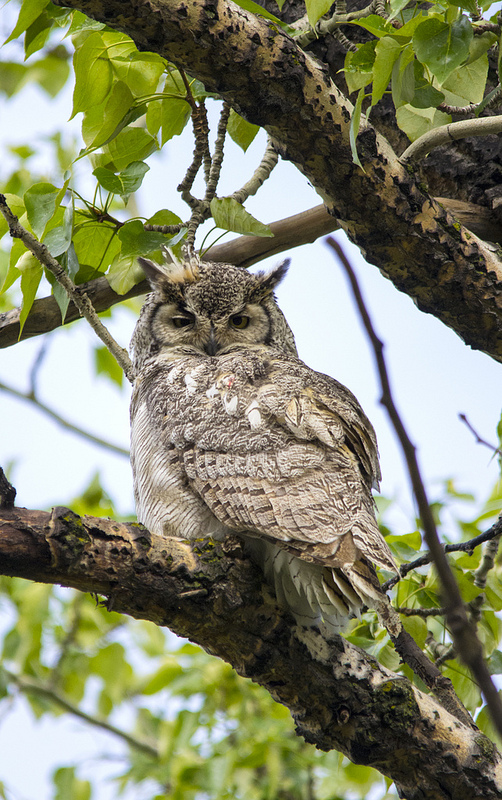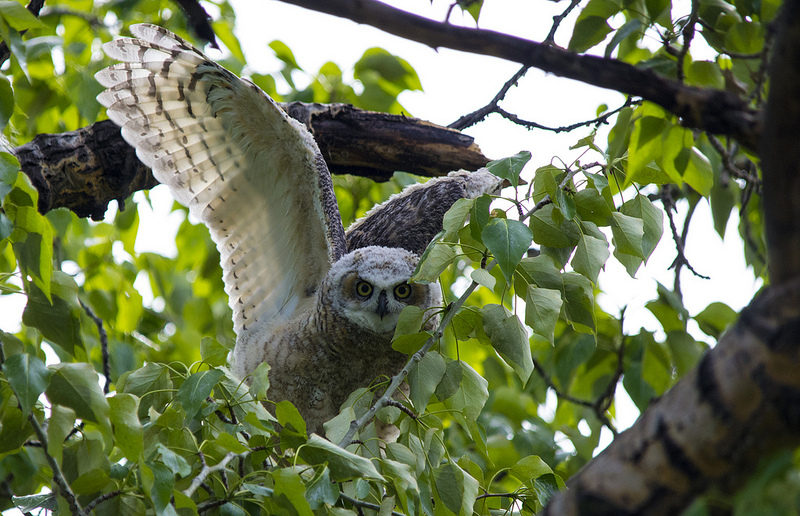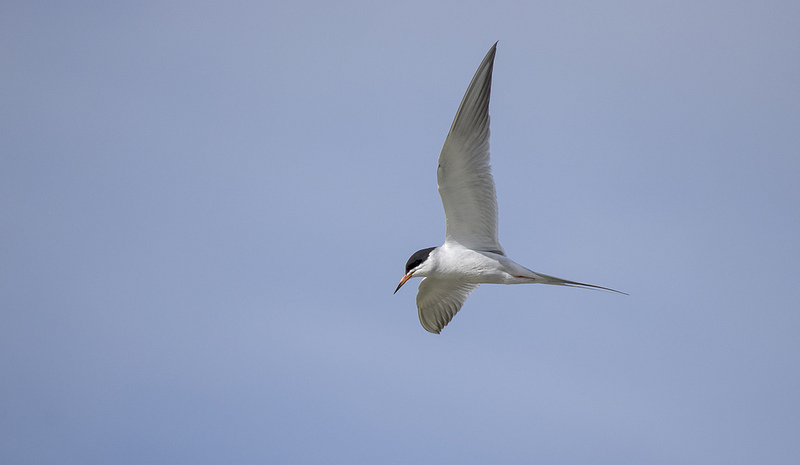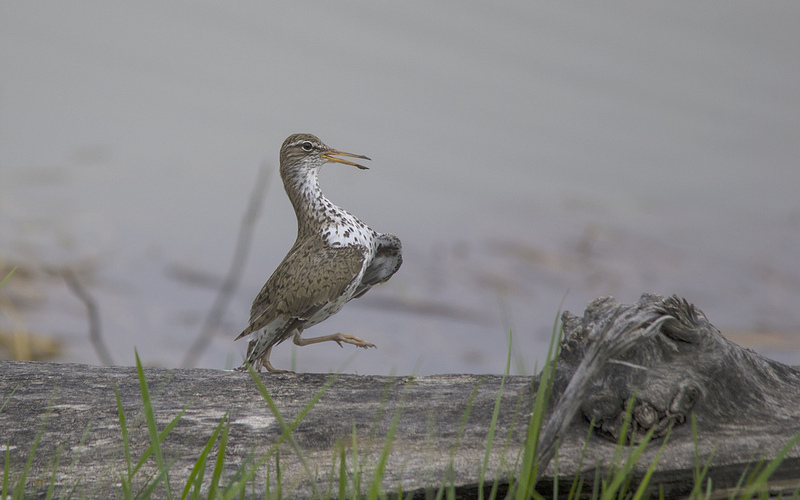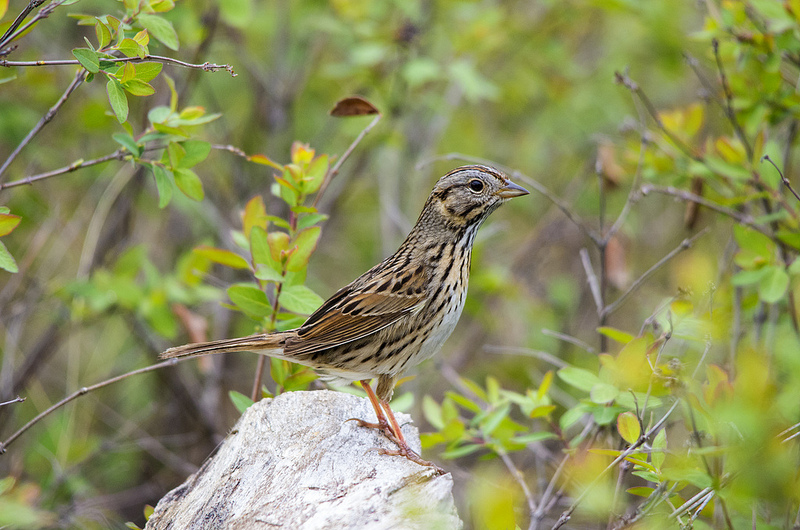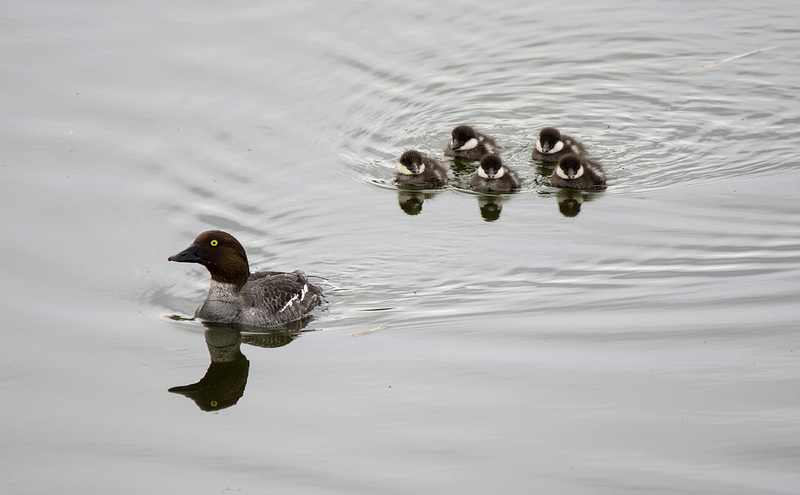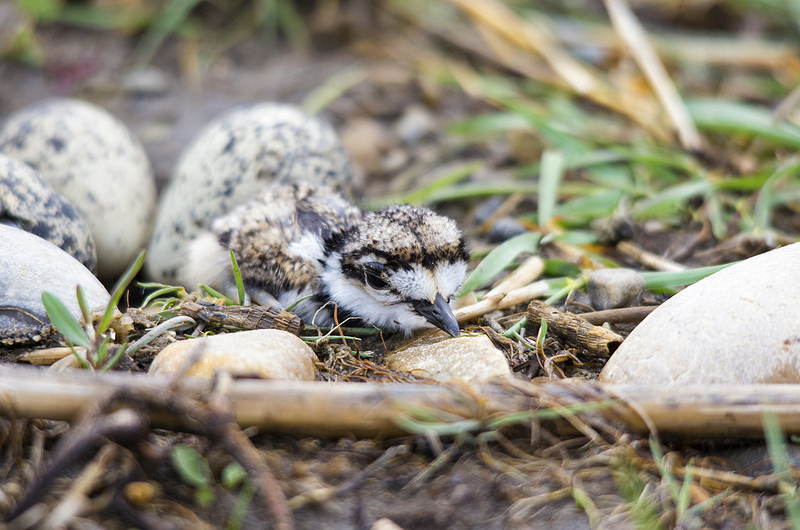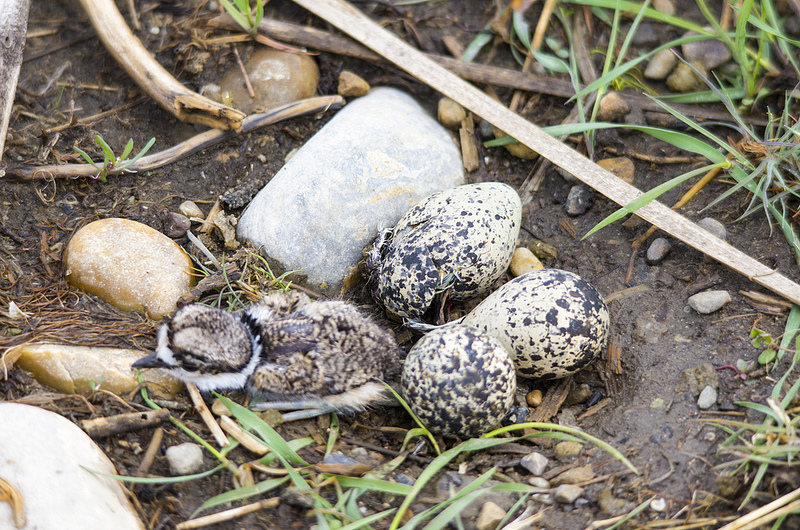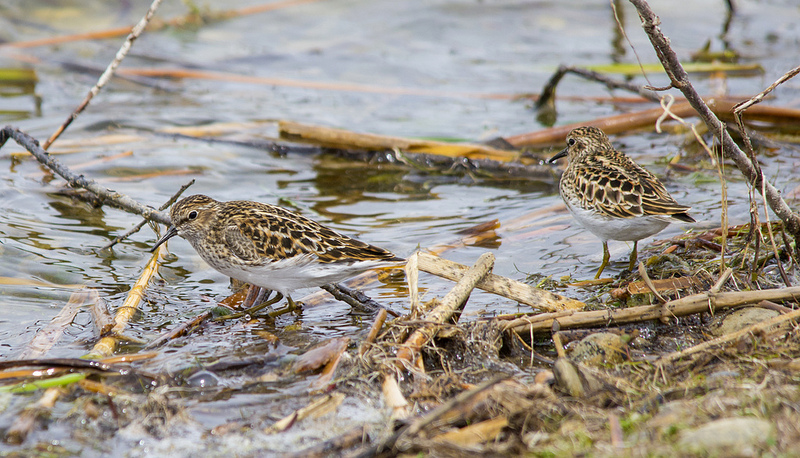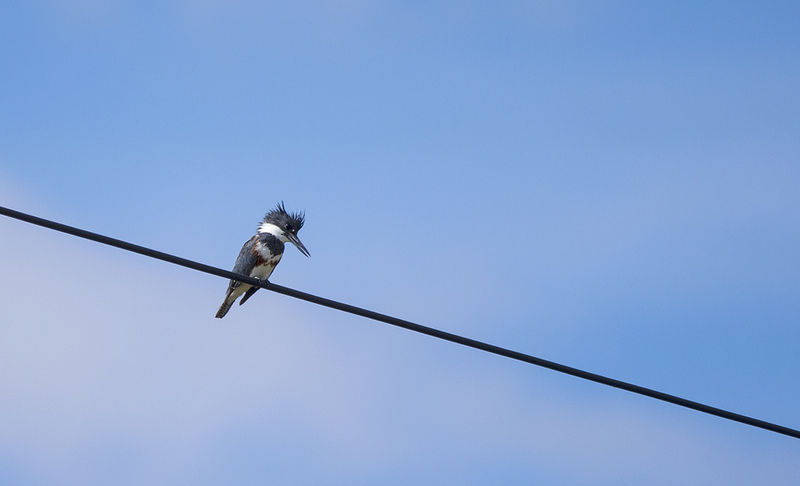On June 15, 2013, David Pugh of A Calgary Birder and I began our attempt on a Big Day, starting at Cold Lake in the early morning and ending in Waterton National Park as the last light of day faded. There were quite a few things we learned in the attempt, and many more discoveries of good birding locations, new life birds for both of us, and experiences that have left me wanting more opportunities to visit places I rarely get to.
Part 1: Lead-up to the Big Day
Quite a bit of planning went into our attempt, with many hours collecting data from eBird and the Albertabird Yahoo Group, and using Google Maps to plan our route to maximize the time we’d have outside of the vehicle to find our target birds at each stop. Our original plan was to start at Cold Lake before dawn, listening for as many warbler and vireo species as we could identify by ear, head to a few other ponds and lakes near Cold Lake, then begin driving down the east edge of the province, stopping briefly at a few spots along the way to pick up other targets that are only found in the boreal and parkland biomes, before hitting up Dinosaur Provincial Park for the badlands and prairie specialists there. From there, we would stop at a few places around Brooks, then make a bee-line down to Waterton to pick up the foothills and mountain species before the light faded entirely. Of course, the oft-misquoted proverb originally penned by German war strategist Helmuth von Moltke: “No plan survives contact with the enemy” was certainly apt for our Big Day attempt.
Part 2: The trip begins
We put rubber to the road leaving Calgary on Thursday, June 13. After a brief stop at Slack Slough in Red Deer to stretch our legs, we made a straight shot for Elk Island National Park, just east of Edmonton, and camped the night there. After being serenaded to sleep by the calls of a nearby Nelson’s Sparrow, the distinct “onk-a-chonk” of at least three American Bitterns, and constant bugling of Red-necked Grebes and Common Loons on Astotin Lake, we arose the next morning bright eyed and bushy-tailed to do some birding around the lake. A quick trip around the boardwalk turned up a few good birds, but nothing exceptional, so we packed up the tent and headed down the road to Tawayik Lake on the south end of the park. Along the road we came across this male Rose-breasted Grosbeak singing away in the morning light, giving us great photo opportunities.
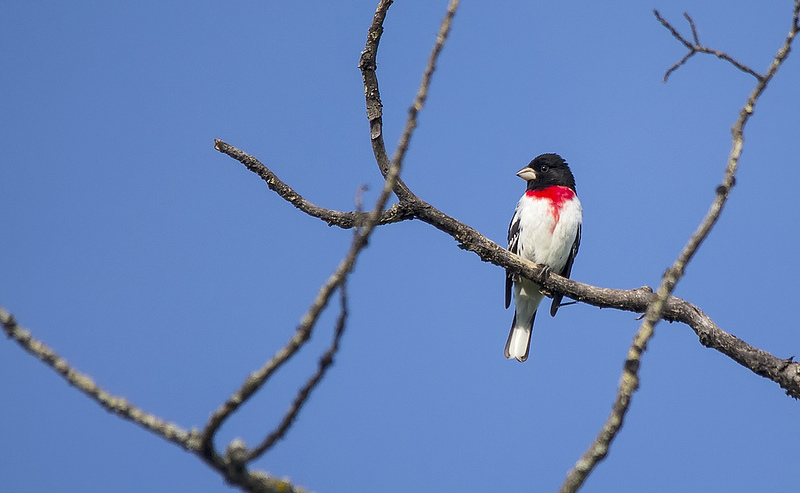
Rose-breasted Grosbeak
Pentax K-5 + Sigma 150-500@500mm
1/1600sec, f/6.3, ISO 500
Down at Tawayik Lake we had some good finds including LeConte’s Sparrows, Swamp Sparrow, and even a slightly out of place Baird’s Sparrow along the boardwalk. We were lucky to get familiar with the call here though, as it would have made our actual Big Day record a bit harder to suss out. This little House Wren also took interest in us and decided to sit pretty for the camera for as long as we could possibly have asked.
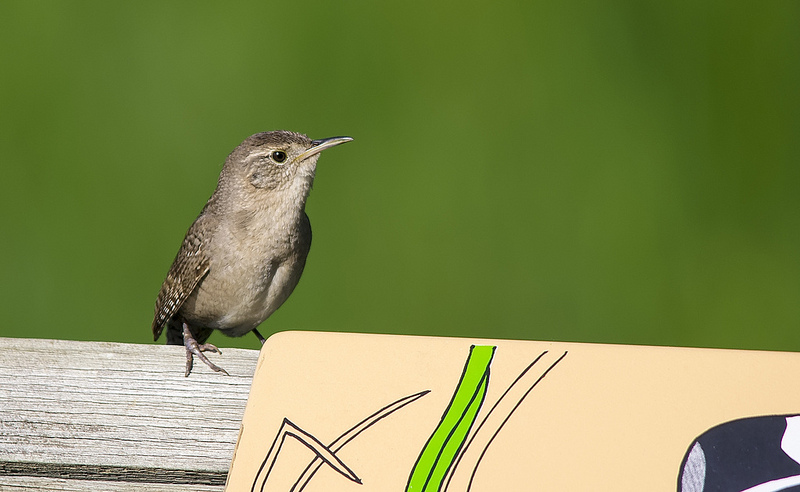
House Wren
Pentax K-5 + Sigma 150-500@500mm
1/1600sec, f/6.3, ISO 400
We headed out from Elk Island with just one more stop planned before our lunch break in Vermilion, that being a regularly reported location for Piping Plover just south of Innisfree. I’d seen one a few weeks before near Hanna, and, as this would be a lifer for David, we decided it would be worth a brief stop. As we scanned the far shore and spotted a very, very distant Piping Plover, we figured that would be fine, and headed back to the van… and that’s when this little bird decided we were endangering its nest and came up to challenge us!
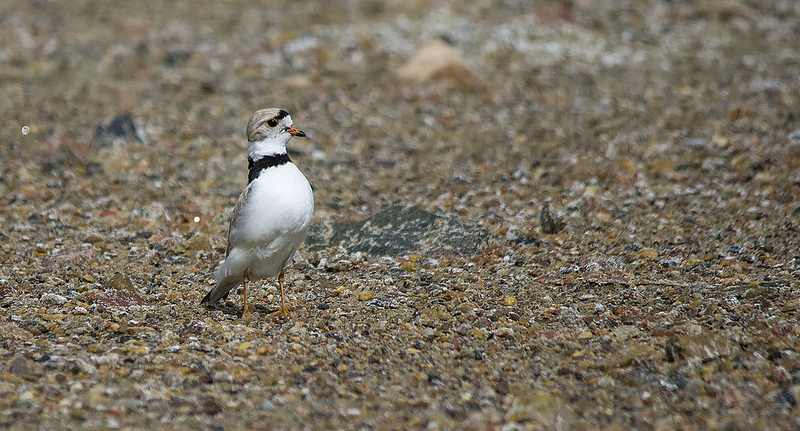
Piping Plover
Pentax K-5 + Sigma 150-500@500mm
1/1250sec, f/6.3, ISO 200
We stopped to visit Charlotte Wasylik at her family farm near Vermilion. Her and her family were incredibly hospitable, and we even had some time to bird at the slough near the farm, where both David and I heard our first ever Sprague’s Pipits! Charlotte writes over at Prairie Birder, and is one of the youngest birders I know, as she’s in Grade 10… giving her at least a 30 year head start on most of the birders I know!
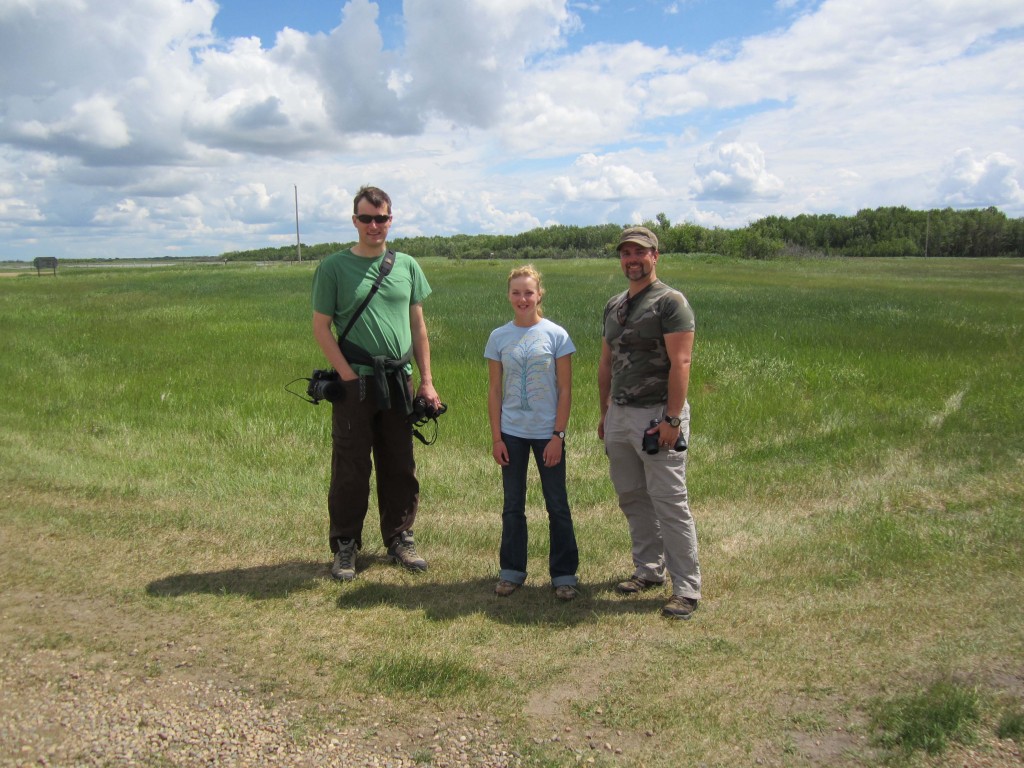
Left to Right: David Pugh, Charlotte Wasylik, and myself with some big Alberta sky in the background
– Photo by Charlotte’s mom, used with permission –
From there we headed up to scout Cold Lake, get settled in to the campground for the night, have some dinner, and take a bit of a walk… after a few false starts, we ended up back in Cold Lake Provincial Park campground and found this Merlin perched high over the edge of the lake, searching for his next meal.
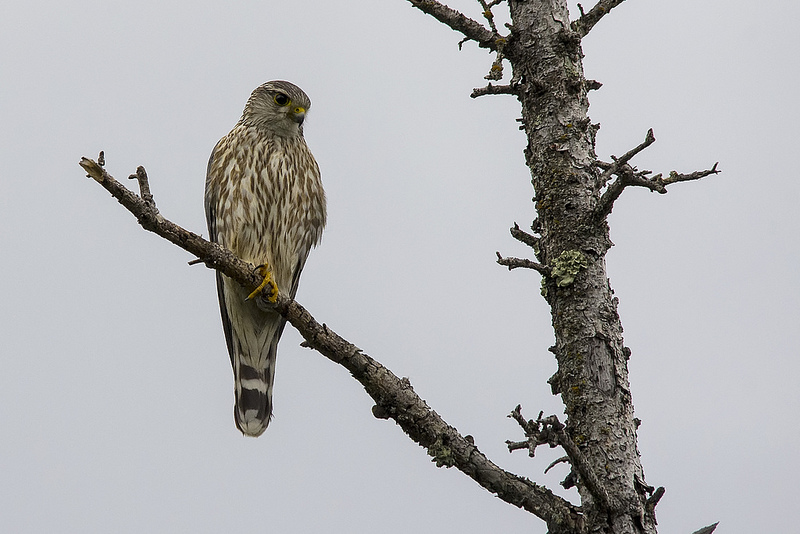
Merlin
Pentax K-5 + Sigma 150-500mm@500mm
1/640sec, ƒ/10, ISO 1600
Part 3: The Big Day
Our list of possible birds for the Big Day was around 267. Our goal was to break 200. While that seemed a bit high for our first attempt, we figured if the weather was good and we stayed on schedule, we’d be able to easily crest 150, and 200 seemed reasonable with the significant distance we were covering and the huge variety of biomes we’d be exploring.
That was the plan… until we woke up at 4:00AM in Cold Lake to a steady downpour. An hour later we decided we’d better at least get on the road, and after a brief jaunt around a couple trails near the lake, and scoping the lake from a few vantage points, we dipped on almost all of the warblers and vireos we’d hoped for, but still managed to spot all three regular white-headed gulls and a few Western Grebes out on the lake, and heard very clearly both Canada Warbler and Ovenbirds calling in the steady rain. One nice find at Cold Lake was a huge number of Purple Martins houses, all full of breeding colonies of Purple Martins, and the rain kept them still enough to get really good, close looks at them.
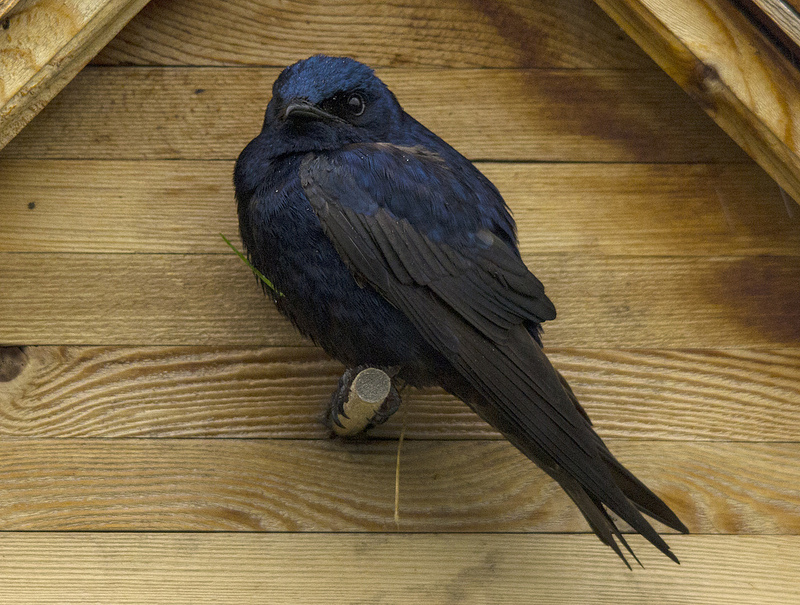
Purple Martin
Pentax K-5 + Sigma 150-500@310mm
1/320sec., ƒ/6.3, ISO 1600
And so the day went. Rain and wind plagued us as far south as Hanna, where we finally evaded the precipitation, but ran into just as steady and stronger gusts of wind.
By the time we reached Dinosaur Provincial Park the winds were still wailing, but we managed to catch some good light for at least a few additions to the list.
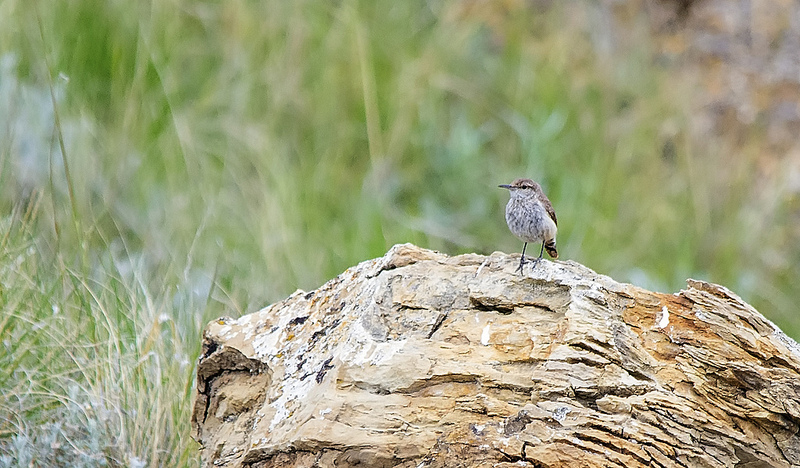
Rock Wren
Pentax K-5 + Sigma 150-500@500mm
1/800sec., ƒ/6.3, ISO 1600
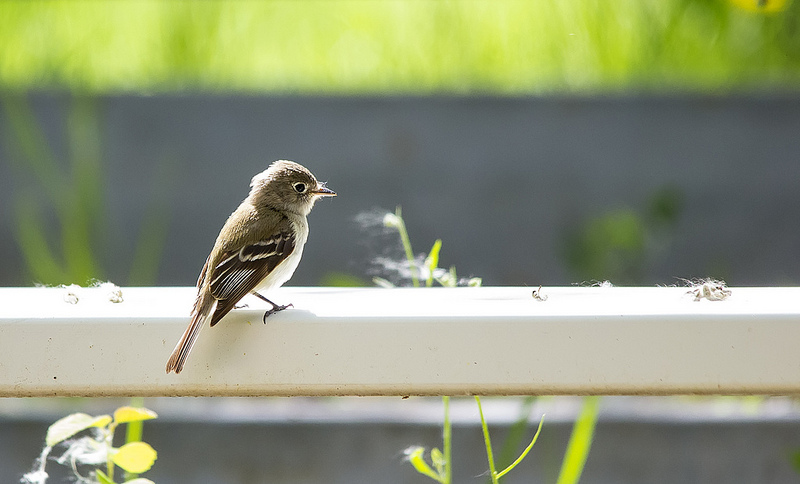
Least Flycatcher
Pentax K-5 + Sigma 150-500@500mm
1/640sec., ƒ/6.3, ISO 1600
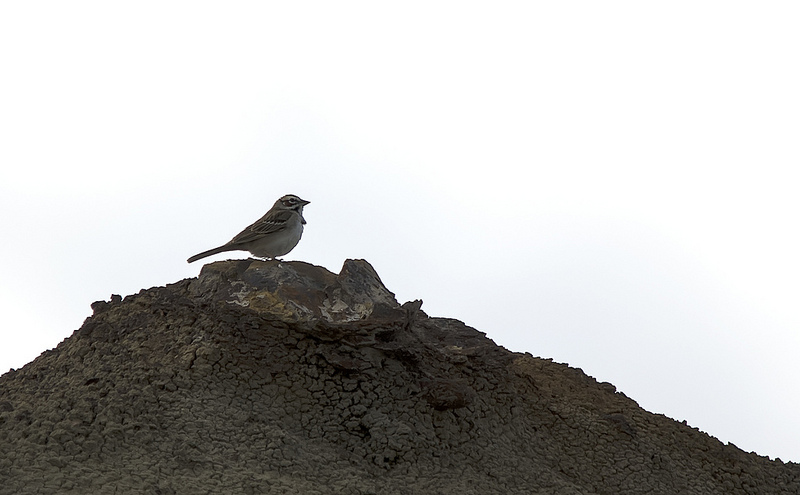
Lark Sparrow
Pentax K-5 + Sigma 150-500@500mm
1/800sec., ƒ/6.3, ISO 80
While those three were expected finds at the park, I did manage a terrible shot of a Baird’s Sparrow, which up until that point I had only heard twice before. It was a nice highlight to a seemingly terrible day so far…
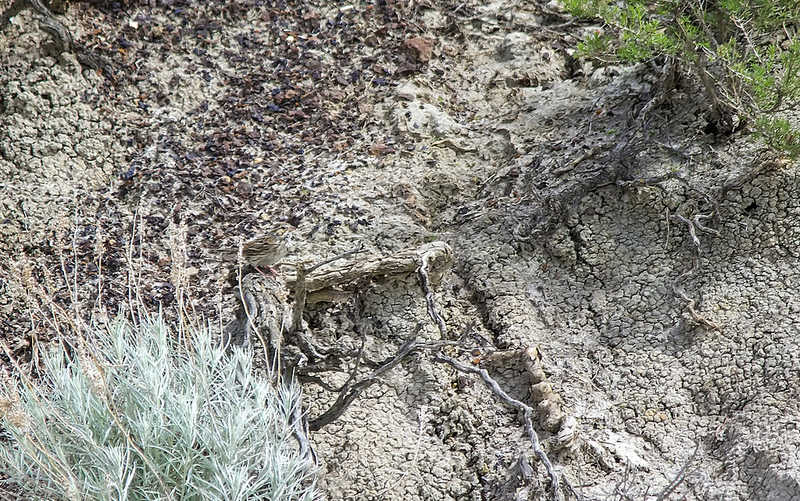
Baird’s Sparrow
Pentax K-5 + Sigma 150-500@500mm
1/800sec., ƒ/6.3, ISO 640
From there, we headed down to a little known spot near Tilley, known as Kininvie Marsh. It was where we expected to find at least another ten species on our list that we’d so far missed elsewhere. One of the nicest finds in this spot was both McCown’s and Chestnut-collared Longspurs, both of which were lifers for me!
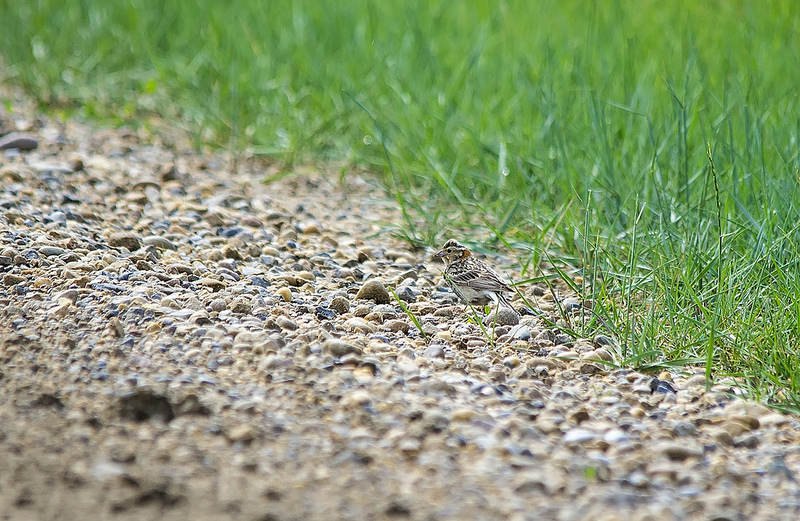
Chestnut-collared Longspur
Pentax K-5 + Sigma 150-500@500mm
1/640sec., ƒ/6.3, ISO 640
A brief stop at Kinbrook Island Provincial Park turned up a couple new birds as well, and allowed for some decent shots in the late afternoon light.
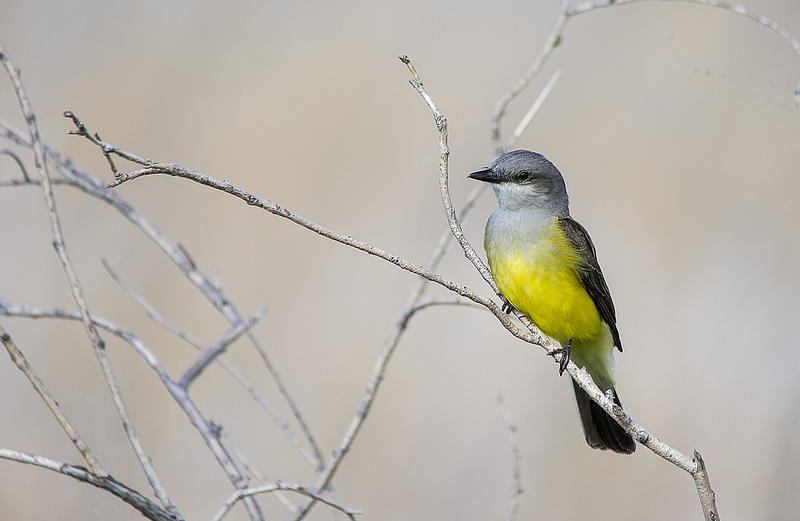
Western Kingbird
Pentax K-5 + Sigma 150-500@500mm
1/640sec., ƒ/6.3, ISO 400
With that last stop, we were on the road again for another few hours, stopping for a fuel break and a quick dinner in Lethbridge, then making the final leg of the trek to Waterton. We did a quick loop around the Buffalo paddock, giving us good looks at some Mountain Bluebirds, and a distant look at some Plains Bison as well.
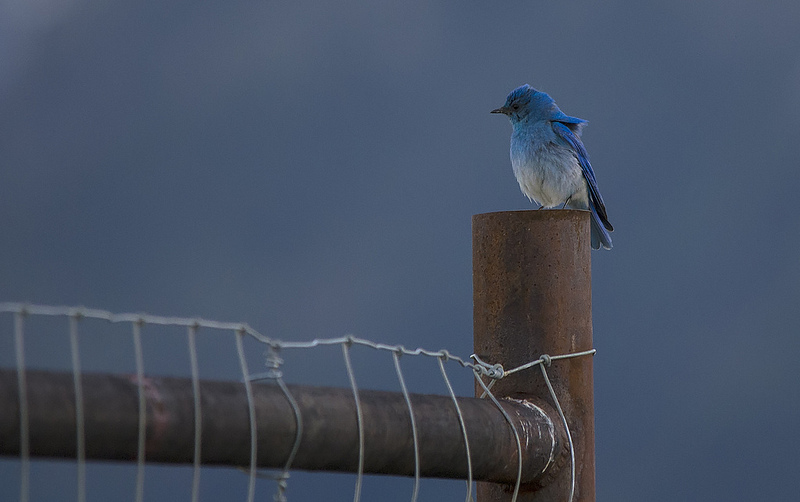
Mountain Bluebird
Pentax K-5 + Sigma 150-500@500mm
1/640sec., ƒ/6.3, ISO 1600
We made a brief stop in the Waterton townsite, which once again turned up some great finds, though nowhere near enough to really top out our 200, but we did have a few surprises… one of which was this incredibly curious Black Bear at Cameron Falls.
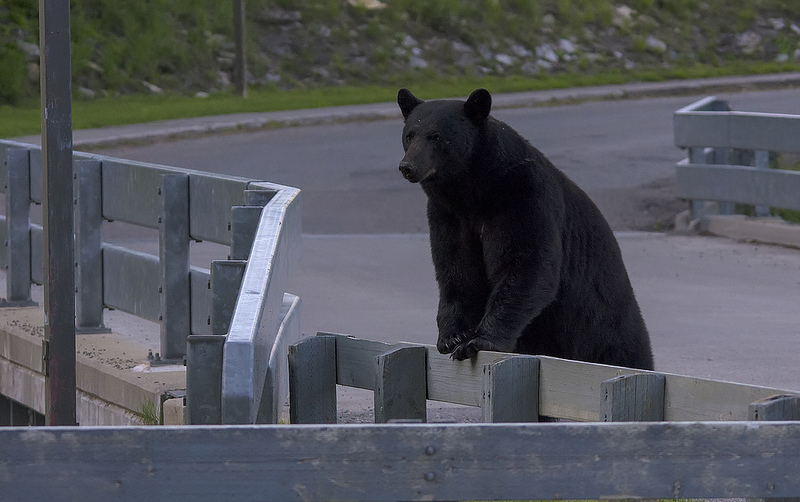
Black Bear
Pentax K-5 + Sigma 150-500@150mm
1/250sec., ƒ/6.3, ISO 1600
And it seemed quite fitting that our Big Day started at one large lake, and ended at another. The drive to Cameron Lake also gave us a couple more species, and quite a stunning view out on the lake.
Cameron Lake on Instagram.
We did make another stop up at Brown-Lowery Provincial Park the next day on our way home, and David managed another technical lifer… while he had seen these in his younger days in Ontario, this was his first look at Evening Grosbeaks since he became a birder. The stop here also added a few more species to our total for the 3 day journey, and it was really great to end the day with just one more lifer added to the tally.
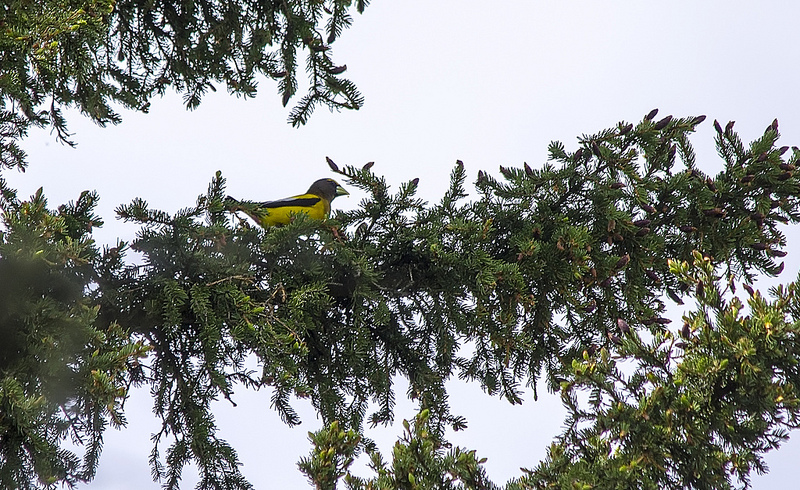
Evening Grosbeak
Pentax K-5 + Sigma 150-500@500mm
1/500sec., ƒ/6.3, ISO 80
Our total for the Big Day? 123 species. A far cry from the goal of 200 that we had in mind, and further still from last year’s record of 226, but not bad considering the weather, and even better for our first trip into most of these habitats, and the lack of real shorebird activity due to the lack of any real mudflats. Our three-day total rounded out at 148, most of which being found between Elk Island and Cold Lake on June 14.
Thanks again for reading, and good birding! More regular updates will be forthcoming now that things are back to relative normalcy here in Calgary!
